How a Cotton Farmer
Defied the Odds to
Embrace Natural
Farming Methods
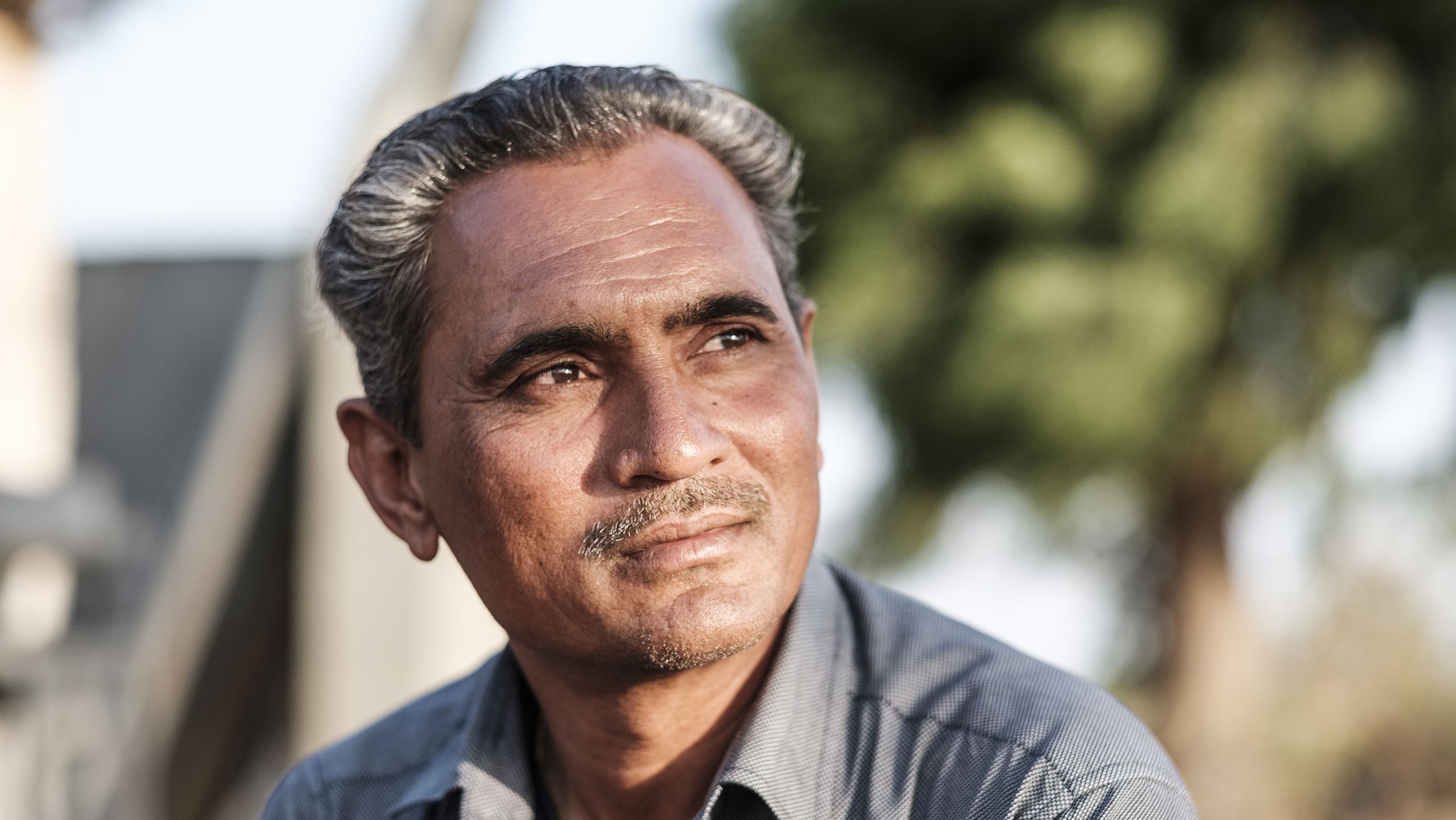
Amid the arid heat of Gujarat, India, Better Cotton Farmer Vinodbhai Patel surveys his densely planted rows of cotton.
He and his workers have just prepared the latest batch of plant-based natural pesticides — a mixture of exotic-looking botanical leaves — to deter pests from his crop. The 48-year-old joined Better Cotton in 2016 after learning that Action for Food Production (AFPRO), one of our field-level partners, could help him accelerate his ambition to nourish the soil and manage pests using ingredients found in nature. While Vinodbhai has always had an affinity towards progressive farming techniques, a challenging period in his life prompted him to re-evaluate his cotton growing practices and dedicate himself to implementing natural farming methods.
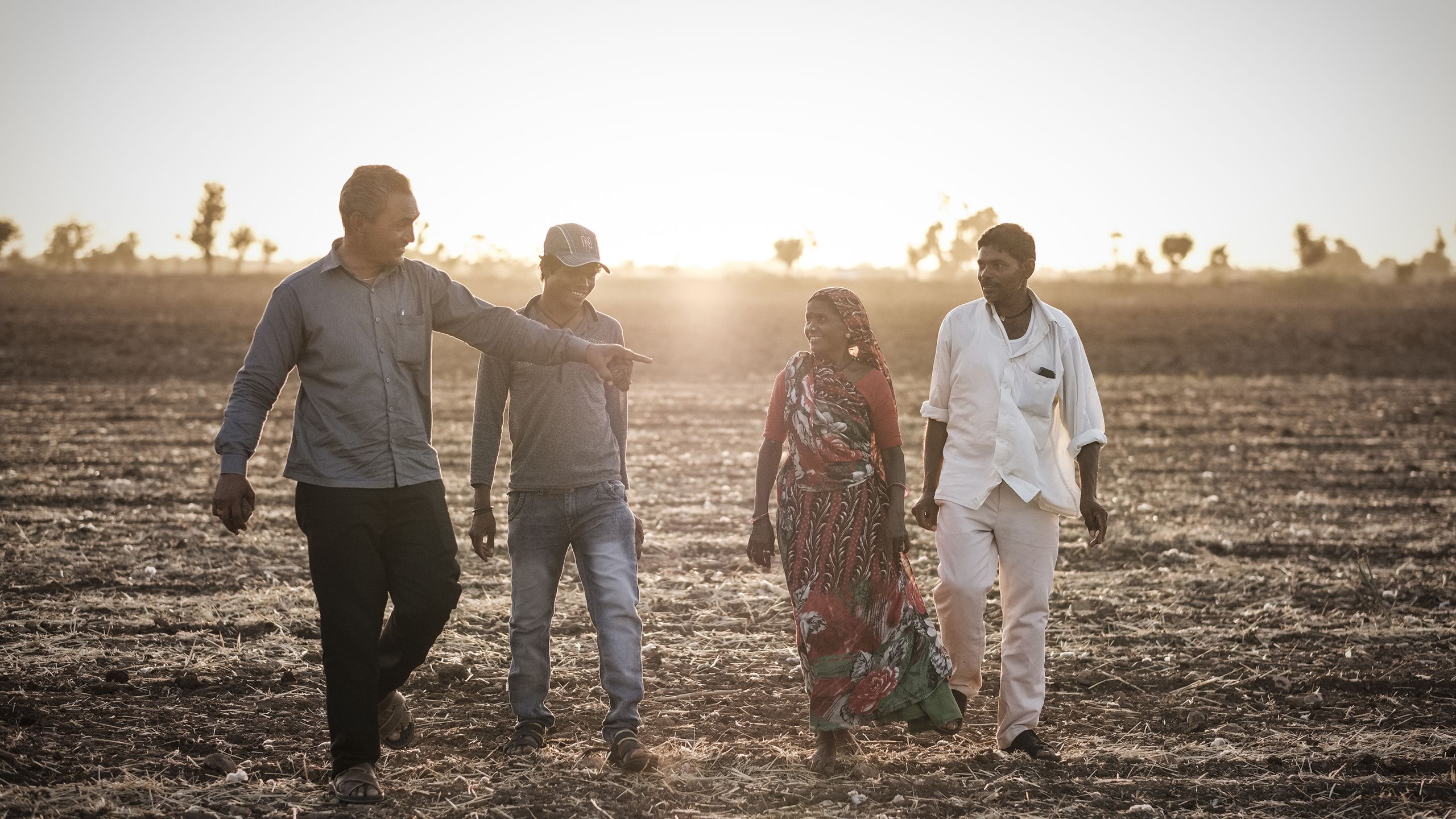
Today, Vinodbhai is a Better Cotton Lead Farmer, responsible for delivering training to 30 other Better Cotton Farmers in his community and advising on best practice.
He uses exclusively biological fertilisers and pesticides (using raw materials sourced from nature) to produce cotton on his six-hectare farm, where he also grows groundnut, cumin, anise seeds, chickpeas and wheat. And he is encouraging his peers to do the same.
To achieve this transformation, Vinodbhai has had to completely change his practices, overcome technical challenges and face harsh resistance from the people around him, in the face of tough growing conditions.
In Vinodbhai’s village, Haripar, in Gujarat’s Saurashtra region, low, irregular rainfall (less than 600mm per year) combine with poor soil quality and a high risk of pest infestations to create ongoing challenges for farmers. Many smallholders live in poverty, relying partially on government subsidies for conventional fertilisers, as well as credit from local shopkeepers to buy traditional agro-chemical products. In addition, local shopkeepers often put pressure on farmers, including Vinodbhai, to make purchases, offering free samples for new products. Around 45% of synthetic pesticides in India are used in cotton farming (US National Center for Biotechnology Information), and their ongoing use is degrading the soil, making it harder to grow healthy plants.
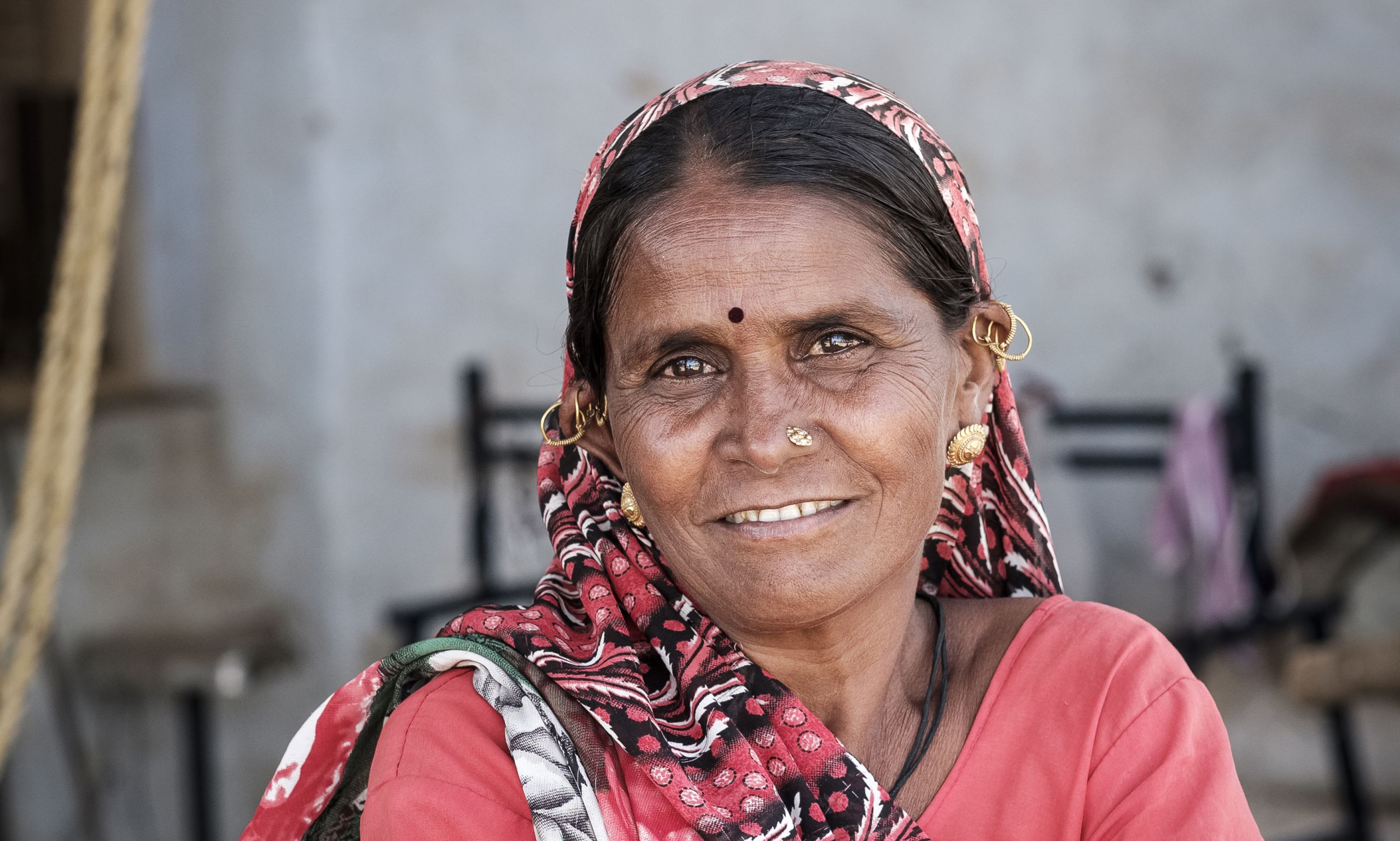
Farm worker Shardaben Hargovindbhai. 2018.
Vinodbhai’s workers (known locally as sharecroppers – temporary workers who live on the farm during the cotton-growing season who take a 25-30% share of the season’s profits) initially threatened to leave if he adopted ‘eccentric’, labour-intensive agricultural practices. Many walked away, concerned that any changes would risk lowering the yield and diminishing their sole income. This was a blow to Vinodbhai, who is increasingly reliant on sharecroppers in the face of deepening agricultural labour shortages.
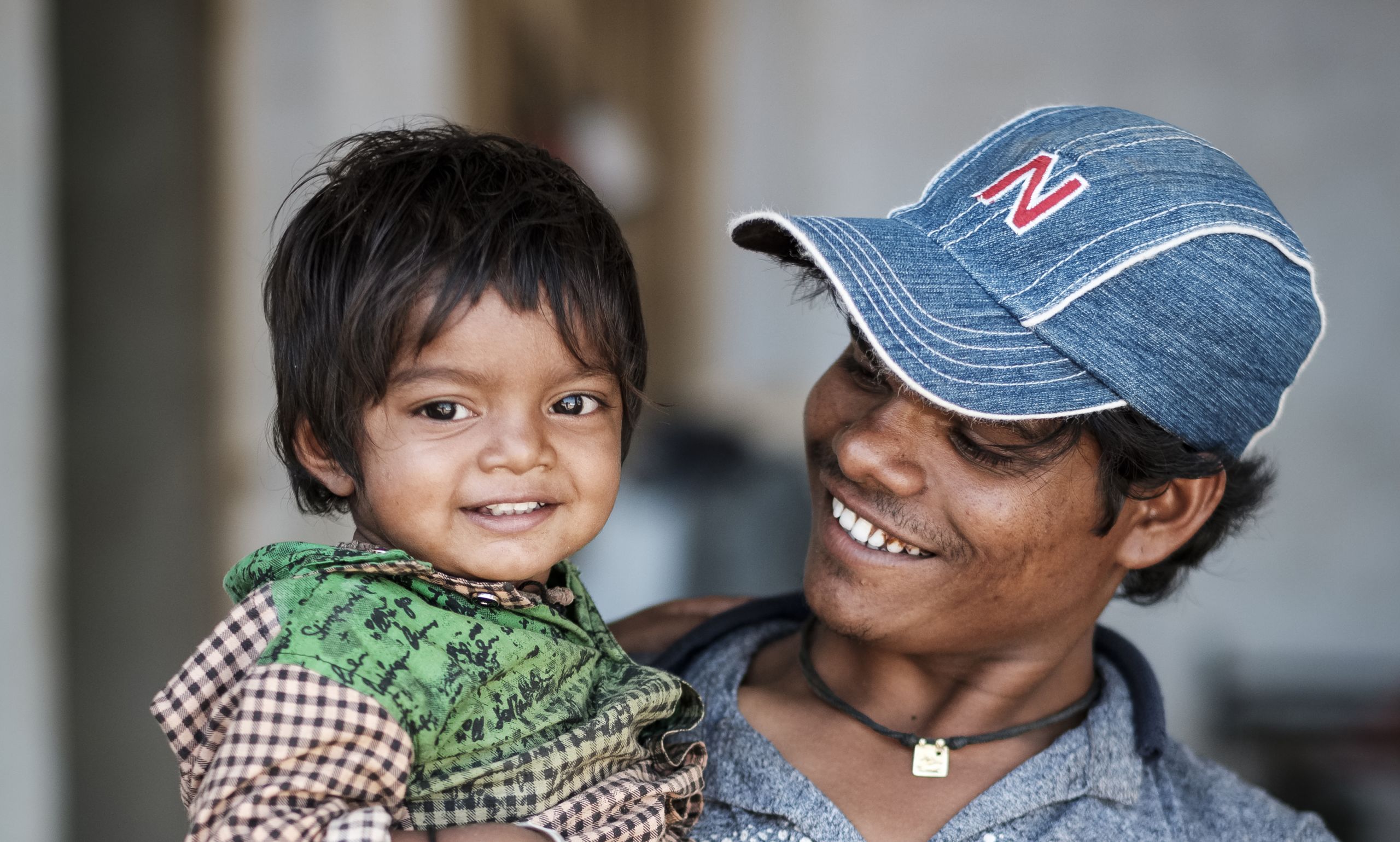
Farm worker Laljibhai Hargovindbhai (and son). 2018.
But the greatest resistance came from his family.
“My wife was supportive of my ambitions. But my brother, who is also a cotton farmer, was sceptical, and tried to persuade me against it. Even my parents were apprehensive, concerned by the uncertainty and potential yield loss.”
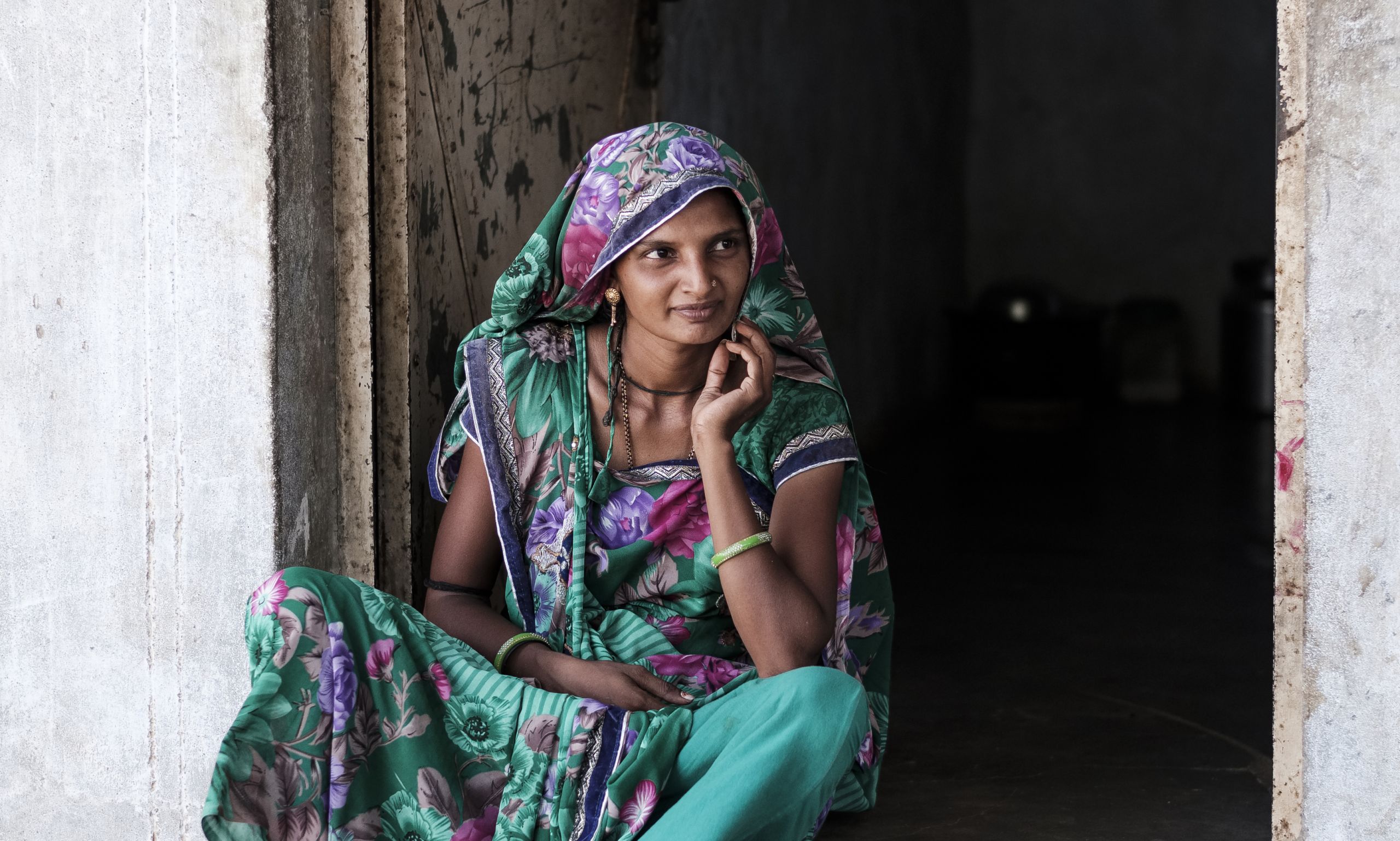
Farm worker Bhavanaben Laljibhai. 2018.
To offset any potential yield losses associated with natural farming methods, he increased the number of plants by around 45% by planting his cotton more densely, sowing two rows close together, followed by a single row, and so on.
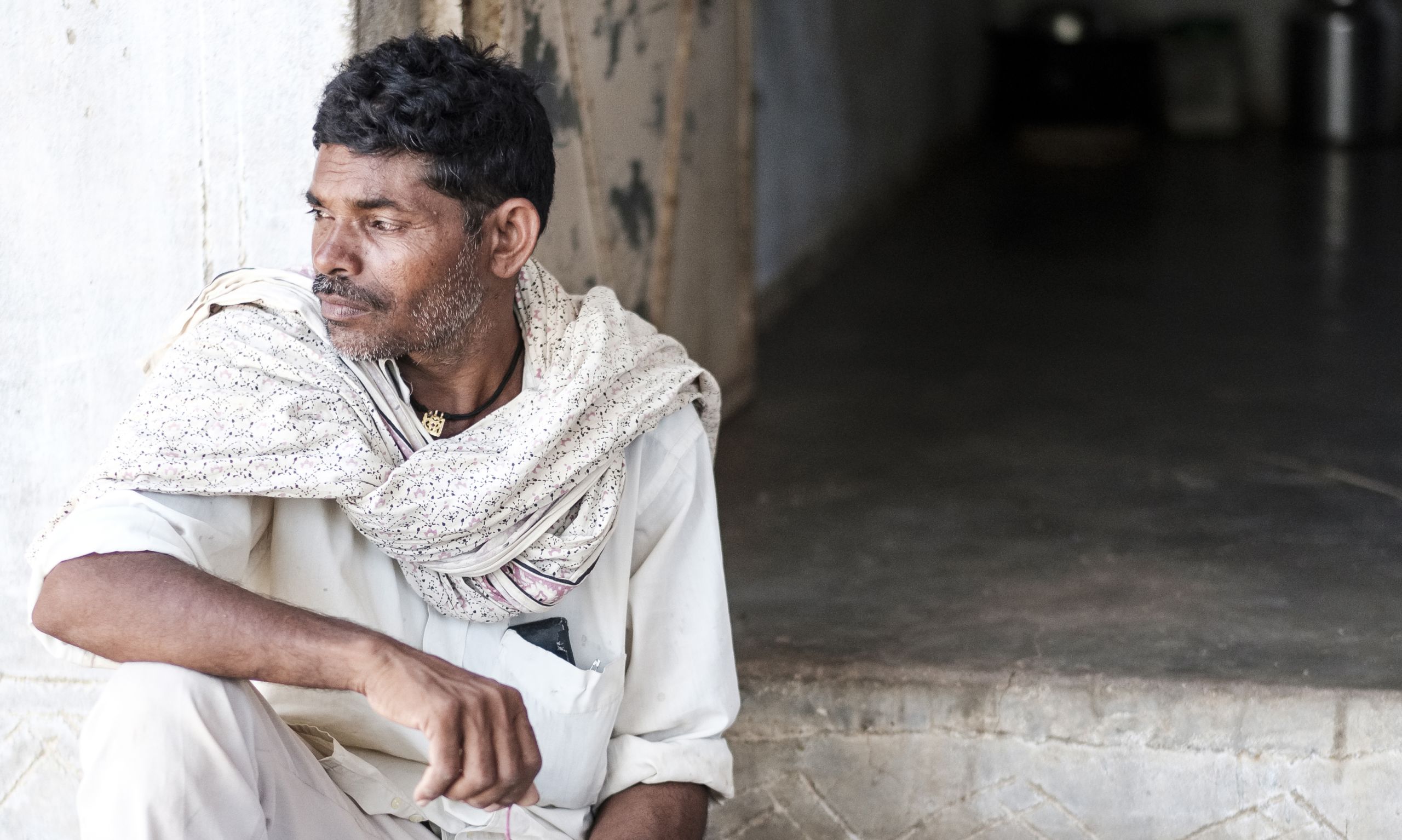
Farm worker Hargovindbhai Haribhai. 2018.
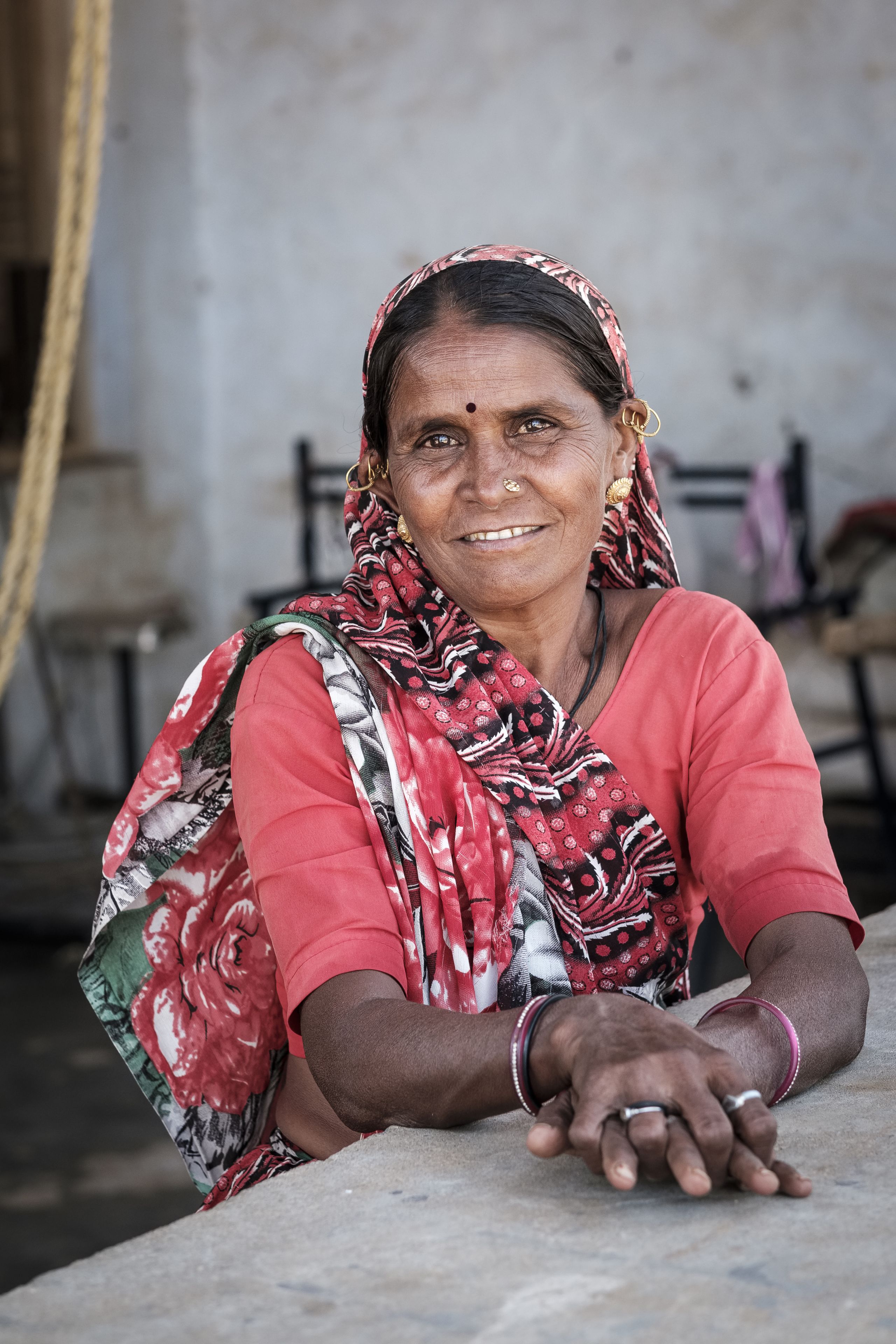
Farm worker Shardaben Hargovindbhai. 2018.
Farm worker Shardaben Hargovindbhai. 2018.
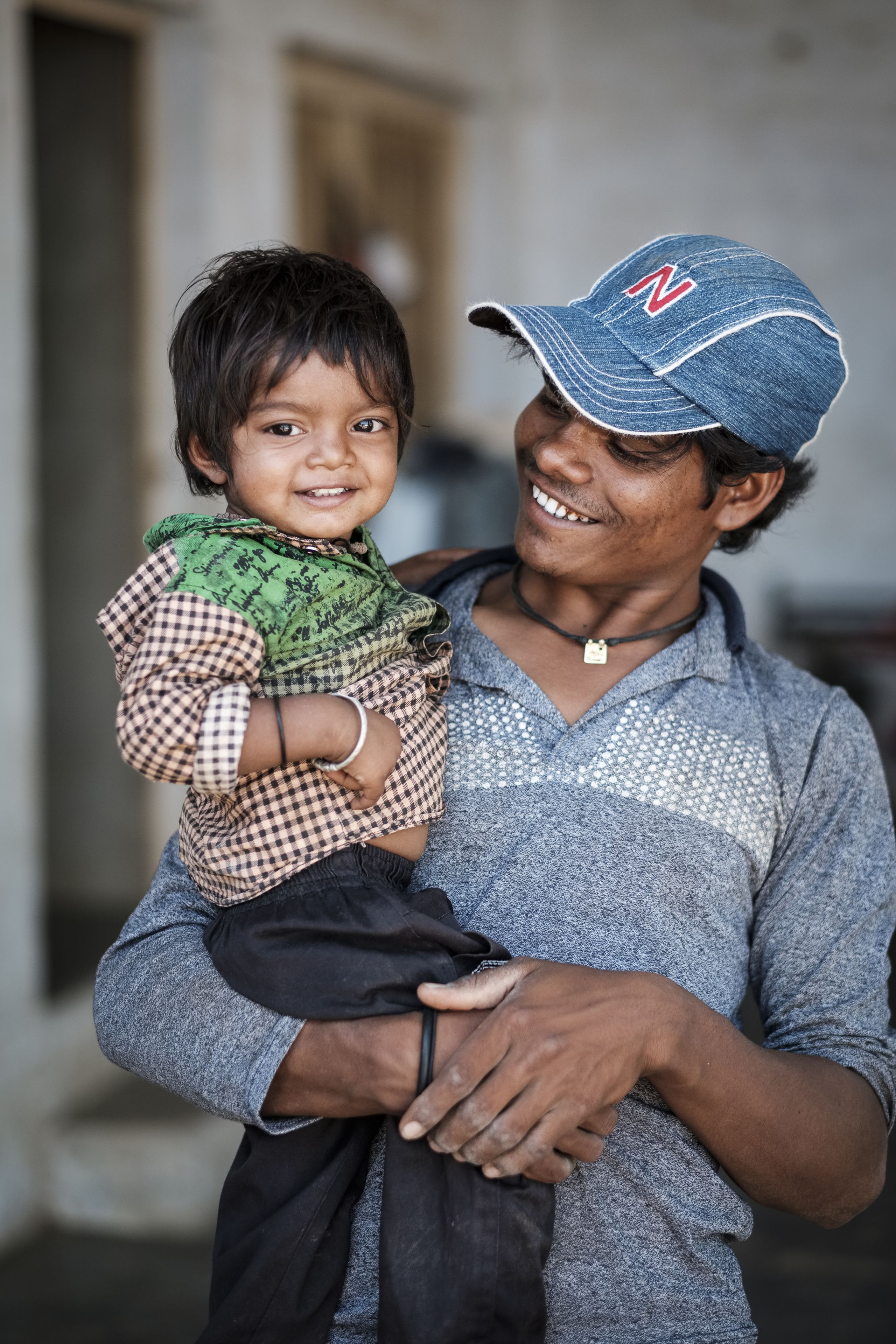
Farm worker Laljibhai Hargovindbhai (and son). 2018.
Farm worker Laljibhai Hargovindbhai (and son). 2018.
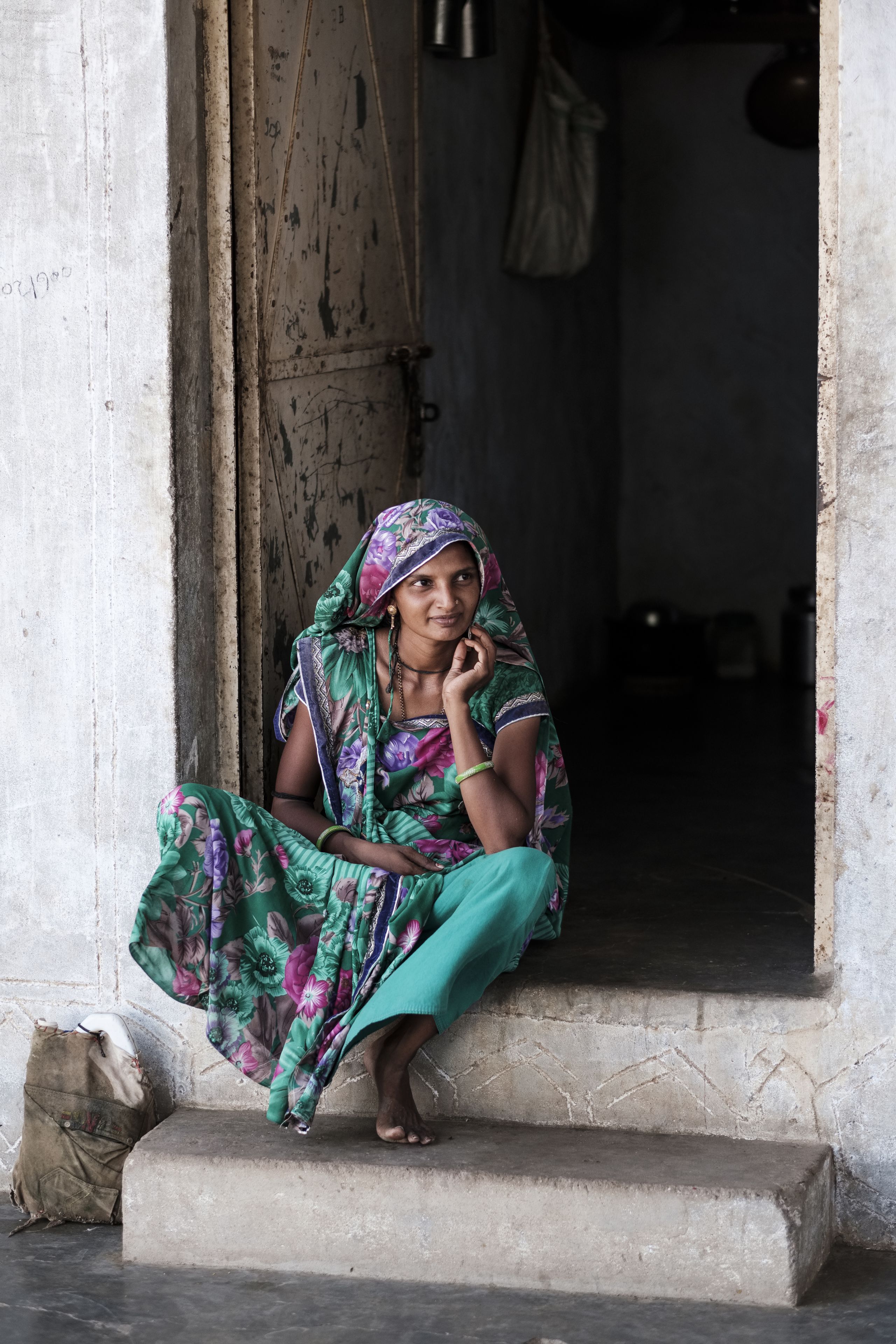
Farm worker Bhavanaben Laljibhai. 2018.
Farm worker Bhavanaben Laljibhai. 2018.
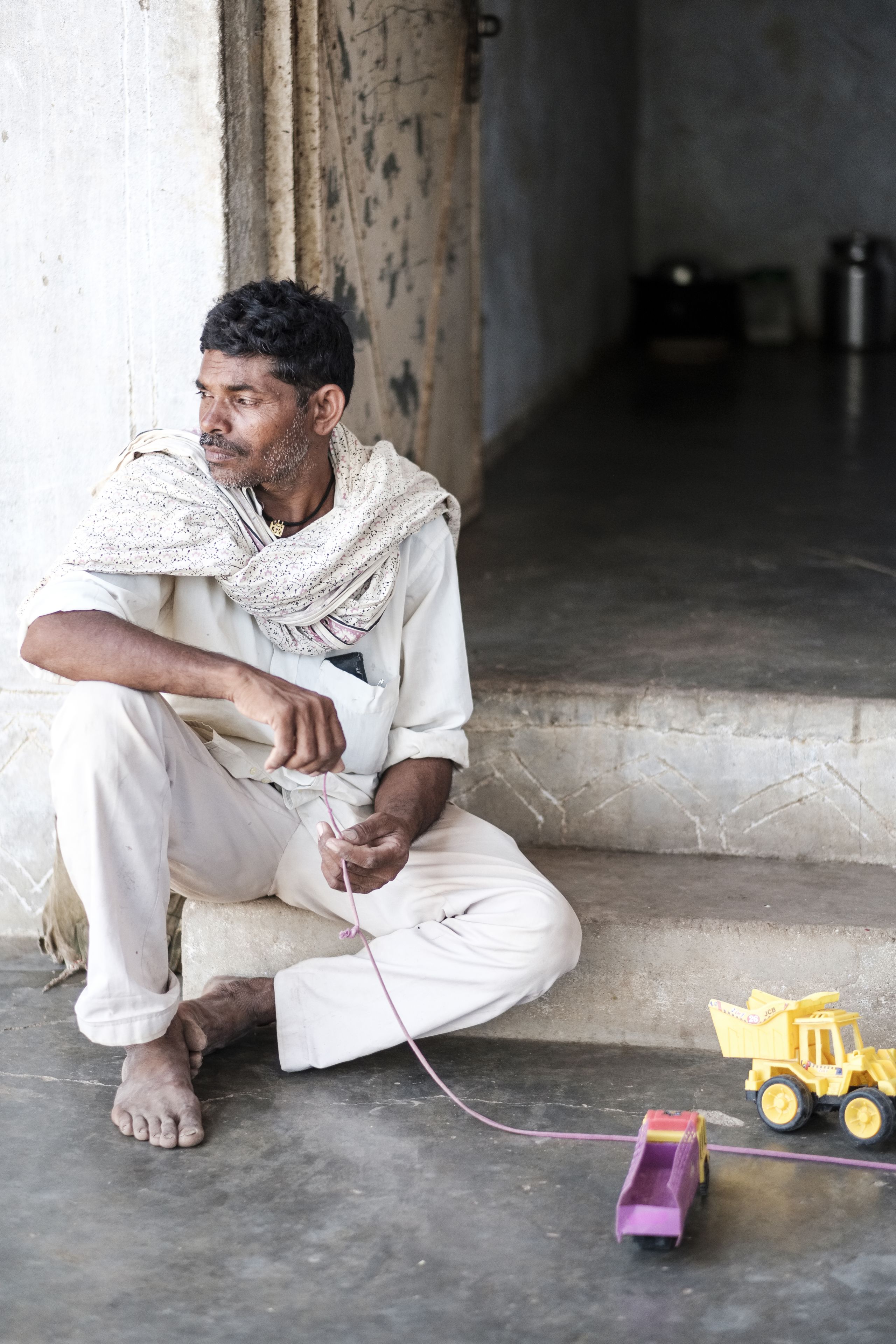
Farm worker Hargovindbhai Haribhai. 2018.
Farm worker Hargovindbhai Haribhai. 2018.
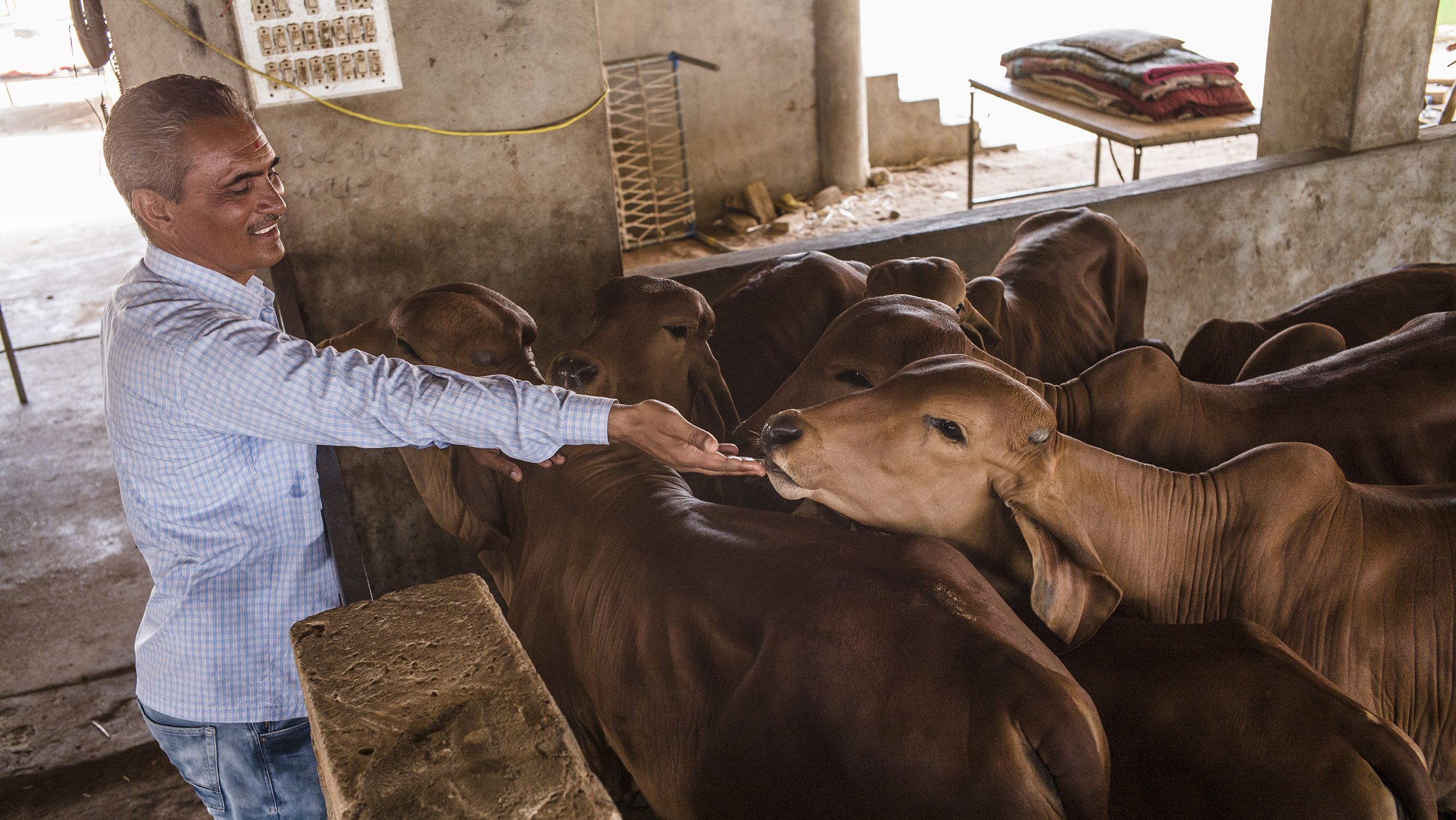
Nourishing the Soil
Vinodbhai persevered over two seasons. To nourish the soil, he began making a natural liquid fertiliser – Jeevamrut (Elixir of Life) – using locally available ingredients. He mixes cow urine and dung, that he collects from nearby farms or ‘goshalas’ — government-funded shelters run by public authorities or charities to protect cows, which are considered sacred in India — jaggery (unrefined cane sugar) from the market, soil, hand-crushed Bengal gram (chickpea) flour and a little water. Bengal gram is a rich source of protein, which aids the multiplication of microbes as the mixture ferments, making the fertiliser more effective. The additional planning and effort involved in preparing the mixture, which also has to be made frequently, having a shorter shelf life than synthetic alternatives, can deter many cotton farmers in India.
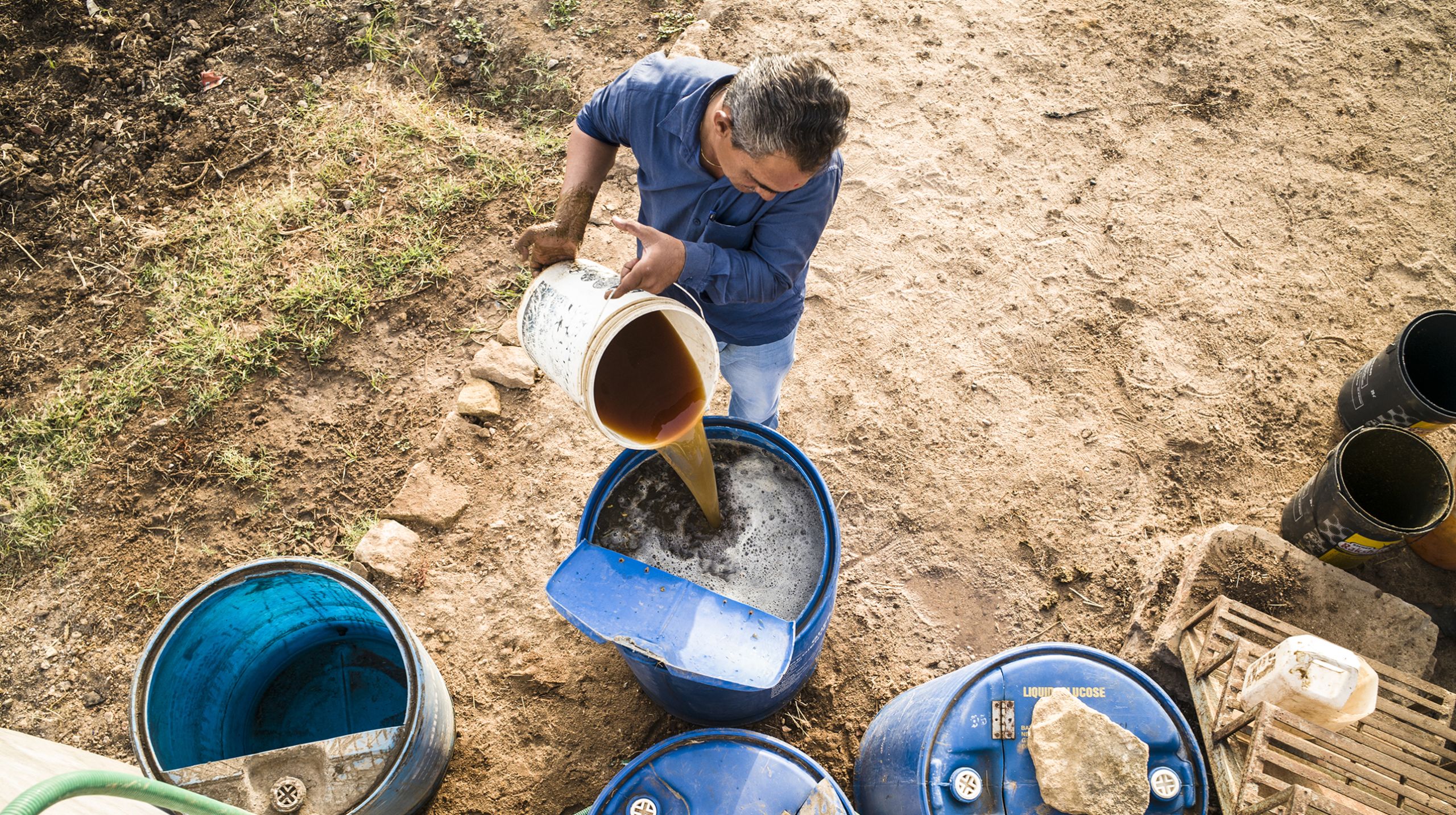
As the additional manual labour involved became clear, the remaining workers complained. Concerned about losing more workers, Vinodbhai thought carefully about how to ease their load.
Drawing on his knowledge of mechanics, he built two 2,500-litre tanks with rotating stirrers to mix the ingredients, and a sprayer fitted with a pump and 300-metre long tube.
Using the sprayer, they apply the Jeevamrut fertiliser directly to the cotton plants’ leaves (where the nutrients are rapidly absorbed), avoiding the need to carry the mixture on their backs. They can also add Jeevamrut to the water used for irrigation, feeding it directly to the soil.
Through Better Cotton training sessions conducted by AFPRO, Vinodbhai has also learnt about the benefits of crop rotation and soil testing. In 2017-18, he grew Guar (green beans commonly grown in India) after the cotton crop had been uprooted, primarily to nourish the soil and regenerate it before the next cotton season. The beans’ roots absorb nitrogen from the atmosphere and deliver it to the soil, and the plants eventually decompose, releasing nutrients. He provides further nourishment to the soil in the form of wheat stalks from his wheat harvest. These harvest leftovers are typically burned by local farmers, who adhere to the commonly held belief that the soil should provide for them, not the other way around.
“Just three years ago, the soil on my farm was so degraded, I could hardly find any earthworms in the soil. Now, I can see many more earthworms, which suggests my soil is recovering. My soil tests show that nutrient levels have increased.”
Better Cotton Farmer Vinodbhai Patel, 2018.
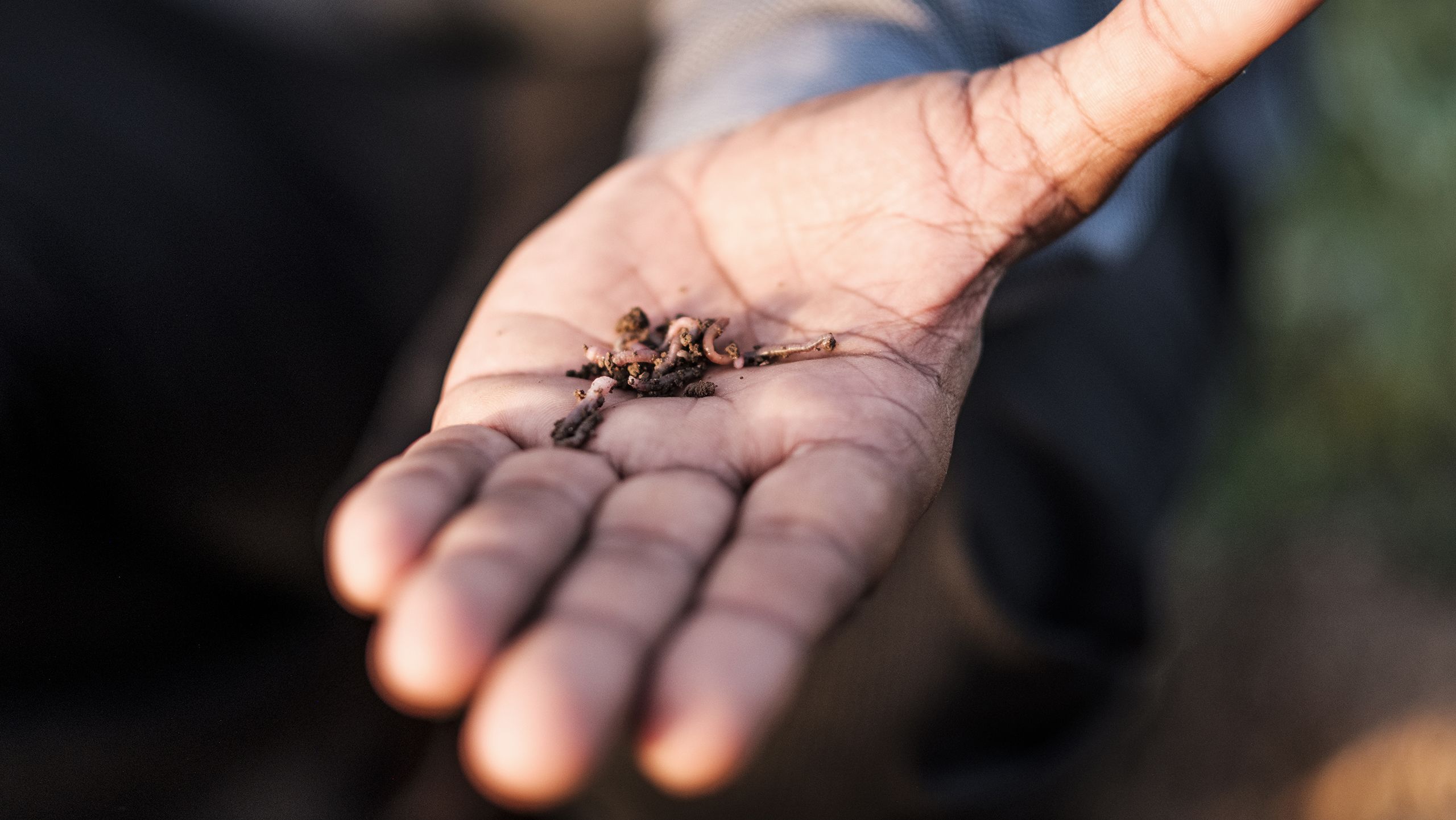
Managing Insect-Pests
Having already noted a decrease in sap-sucking pests (insects, such as aphids, that feed on plants’ natural juices) on his cotton plants by eliminating conventional fertilisers — which can promote plentiful leaves, attracting more pests — Vinodbhai turned his attention to natural pesticides.
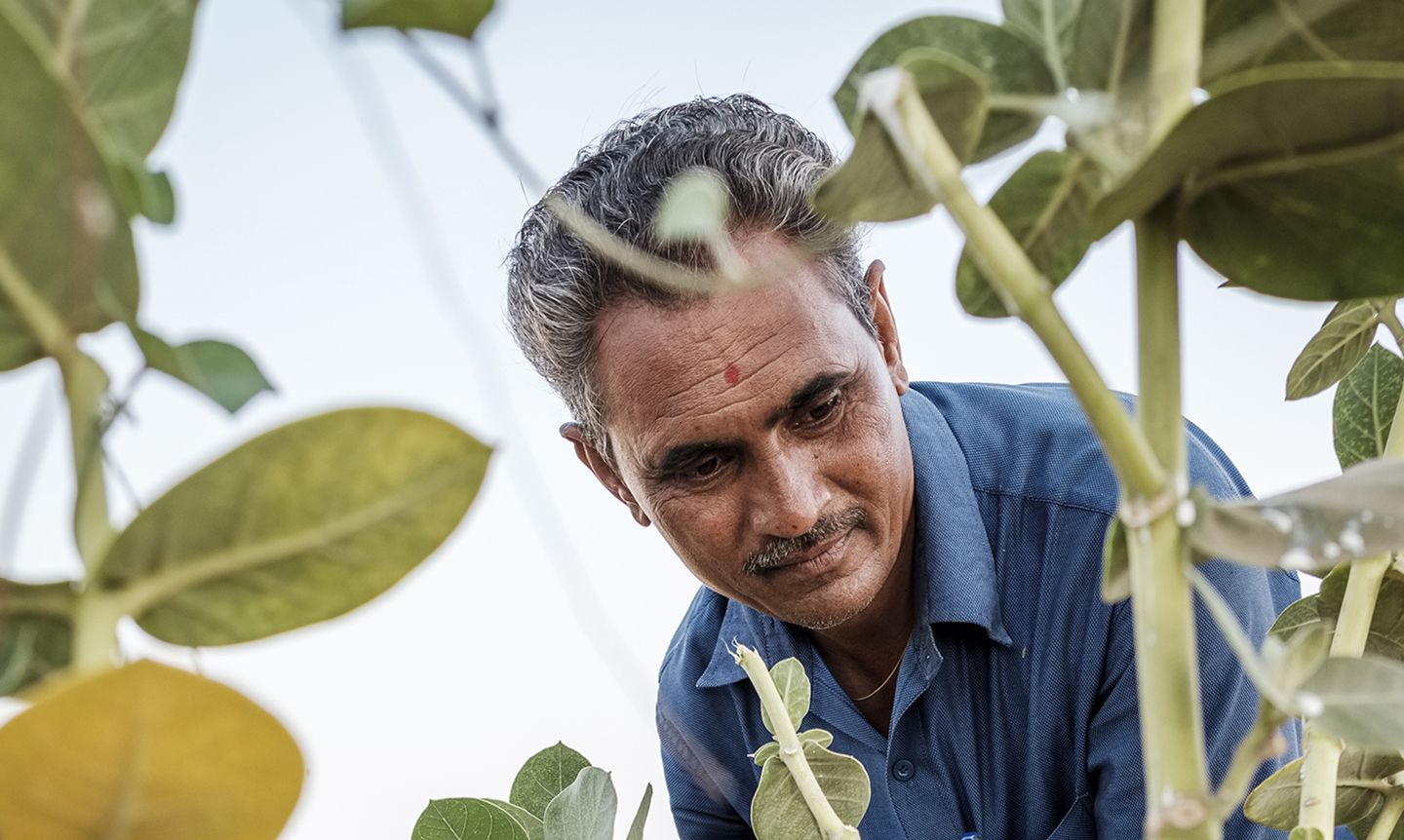
Vinodbhai collecting ingredients from nature to make a natural pesticide. 2018.
“I believe nature can help me address insect problems. Through Better Cotton, I’ve learnt about protecting the natural predators (such as ladybirds) of cotton-eating insects, as well as natural pesticides.”
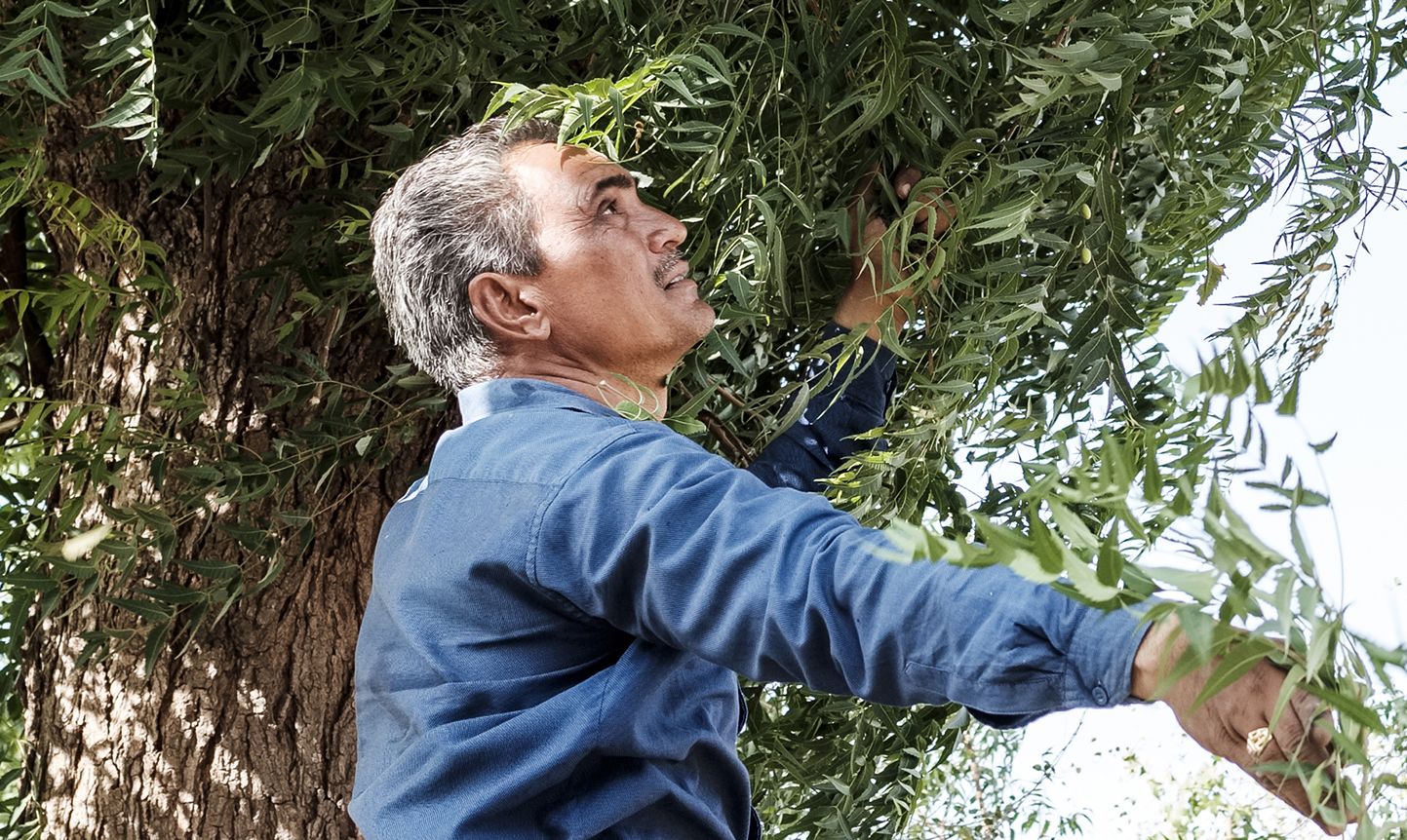
Vinodbhai collecting ingredients from nature to make a natural pesticide. 2018.
Vinodbhai and his workers now prepare a natural pesticide, using leaves from local Neem trees, Crown Flower and Datura shrubs, which are known for their pharmacological effects on insect-pests. Before they apply this natural mixture, his workers count the number of aphids on plants and only spray when the number exceeds a certain threshold.
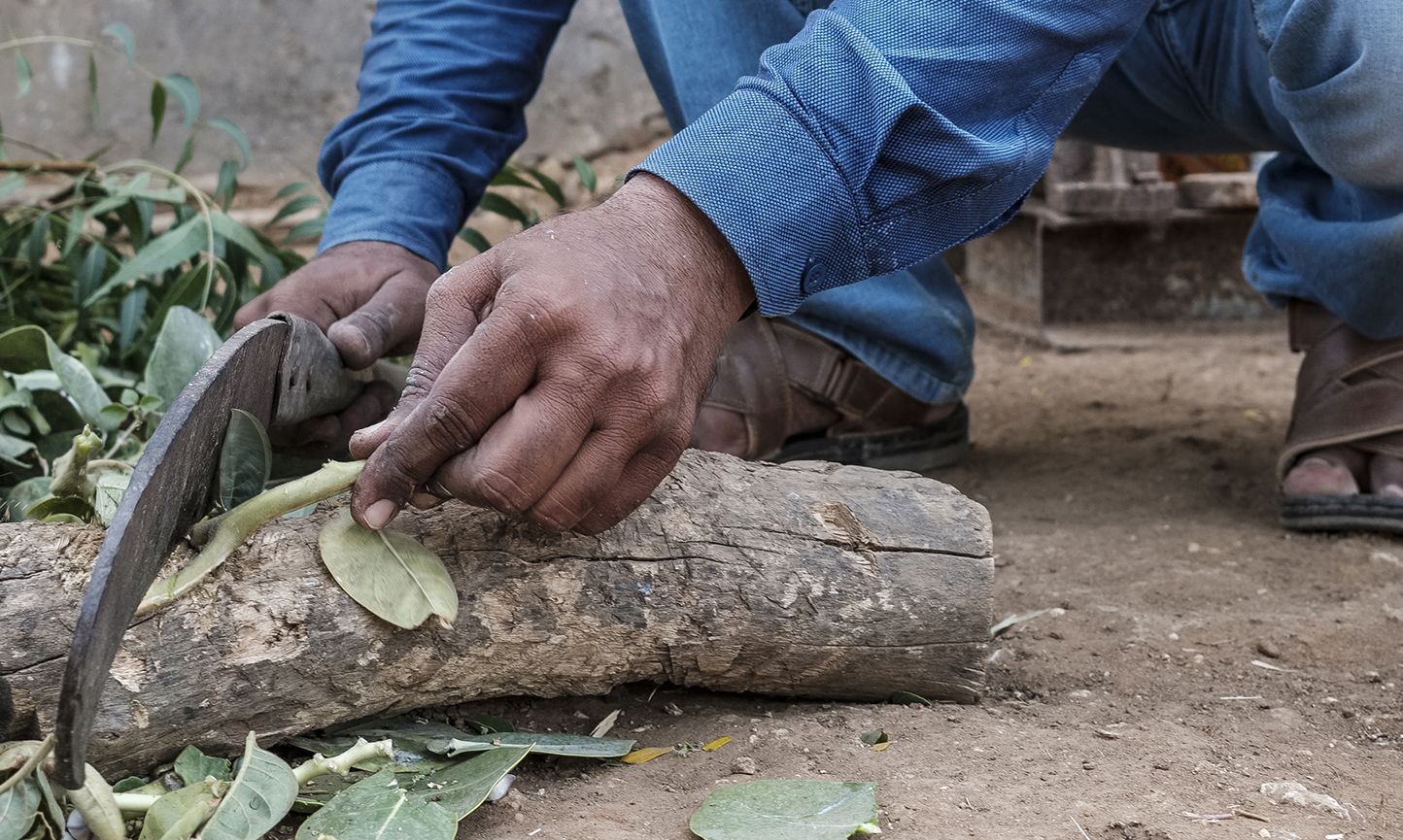
Vinodbhai collecting ingredients from nature to make a natural pesticide. 2018.
Using a natural pesticide is more sustainable compared to using synthetic chemicals, as it does not encourage pesticide resistance, uses fewer resources to prepare and is considered less harmful to the environment because the natural ingredients have a lower toxicity than synthetic chemicals. It is also more cost-effective. However, it requires additional effort to prepare — and it takes 45 days to ferment so it must be prepared in advance — adding to farmers’ and workers’ workloads.
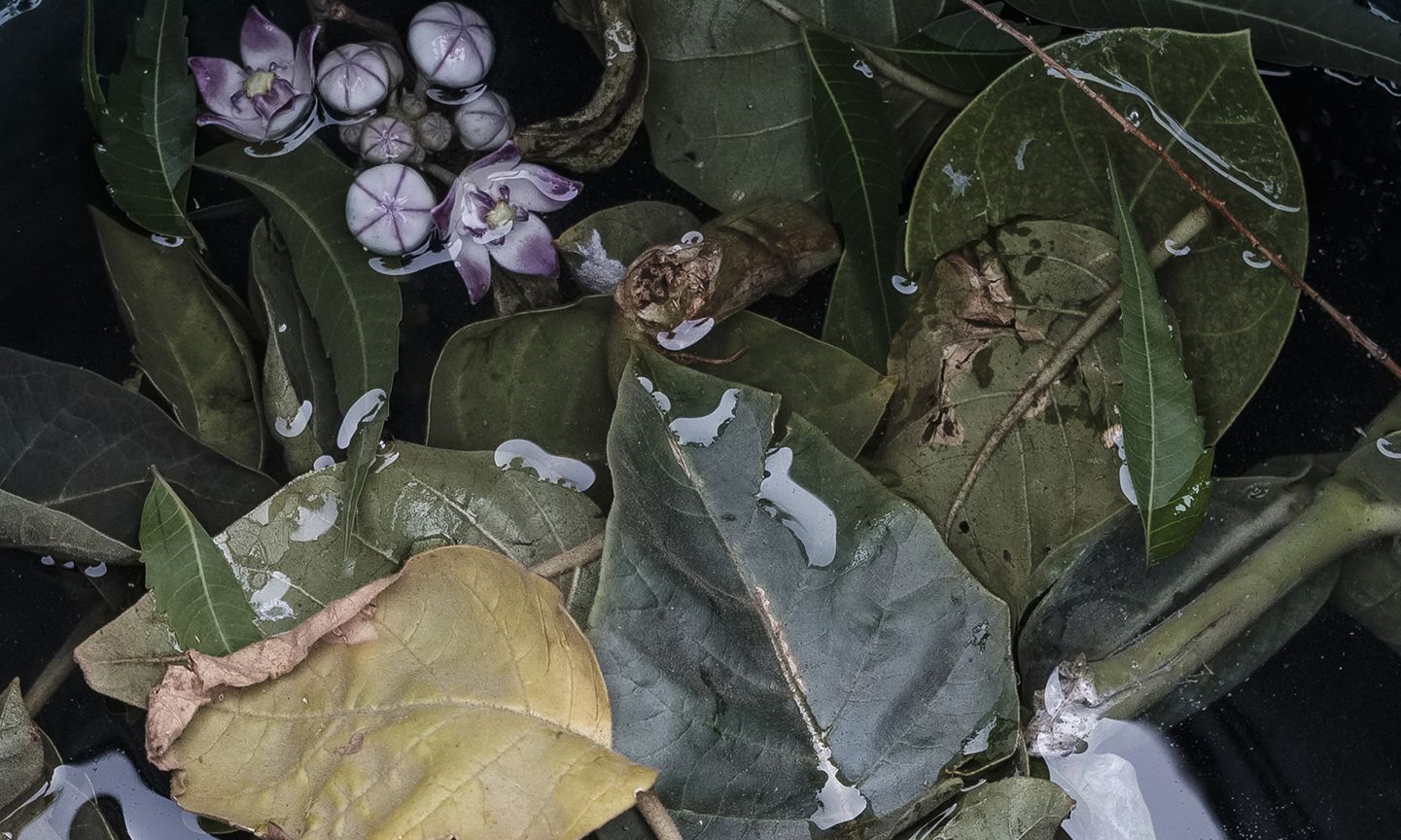
Vinodbhai collecting ingredients from nature to make a natural pesticide. 2018.
But Vinodbhai was undeterred. He has gone further by planting Tecoma trees around his cotton farm; the yellow Tecoma flowers attract aphids, preventing them from invading his cotton plants.
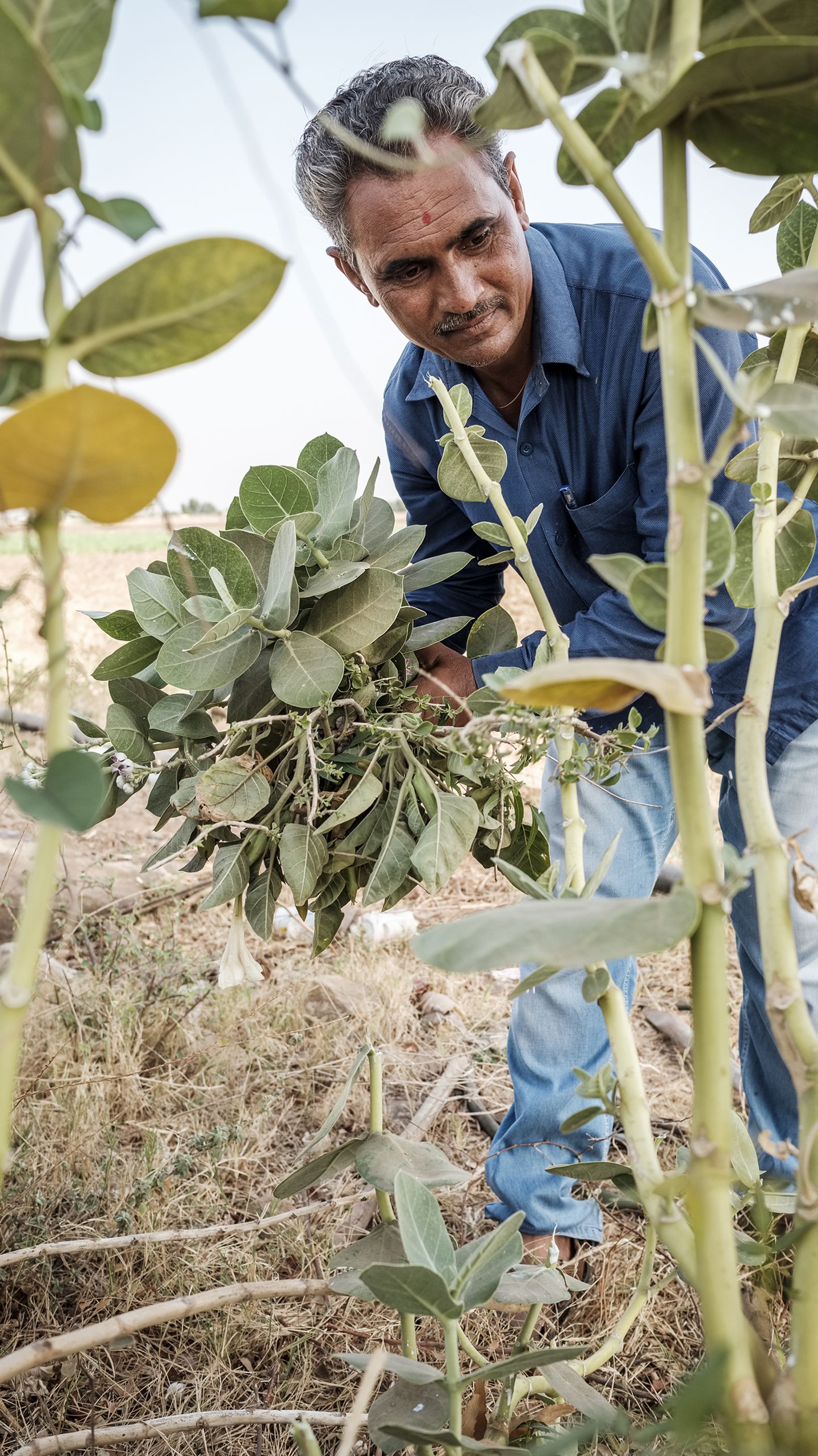
Vinodbhai collecting ingredients from nature to make a natural pesticide. 2018.
Vinodbhai collecting ingredients from nature to make a natural pesticide. 2018.
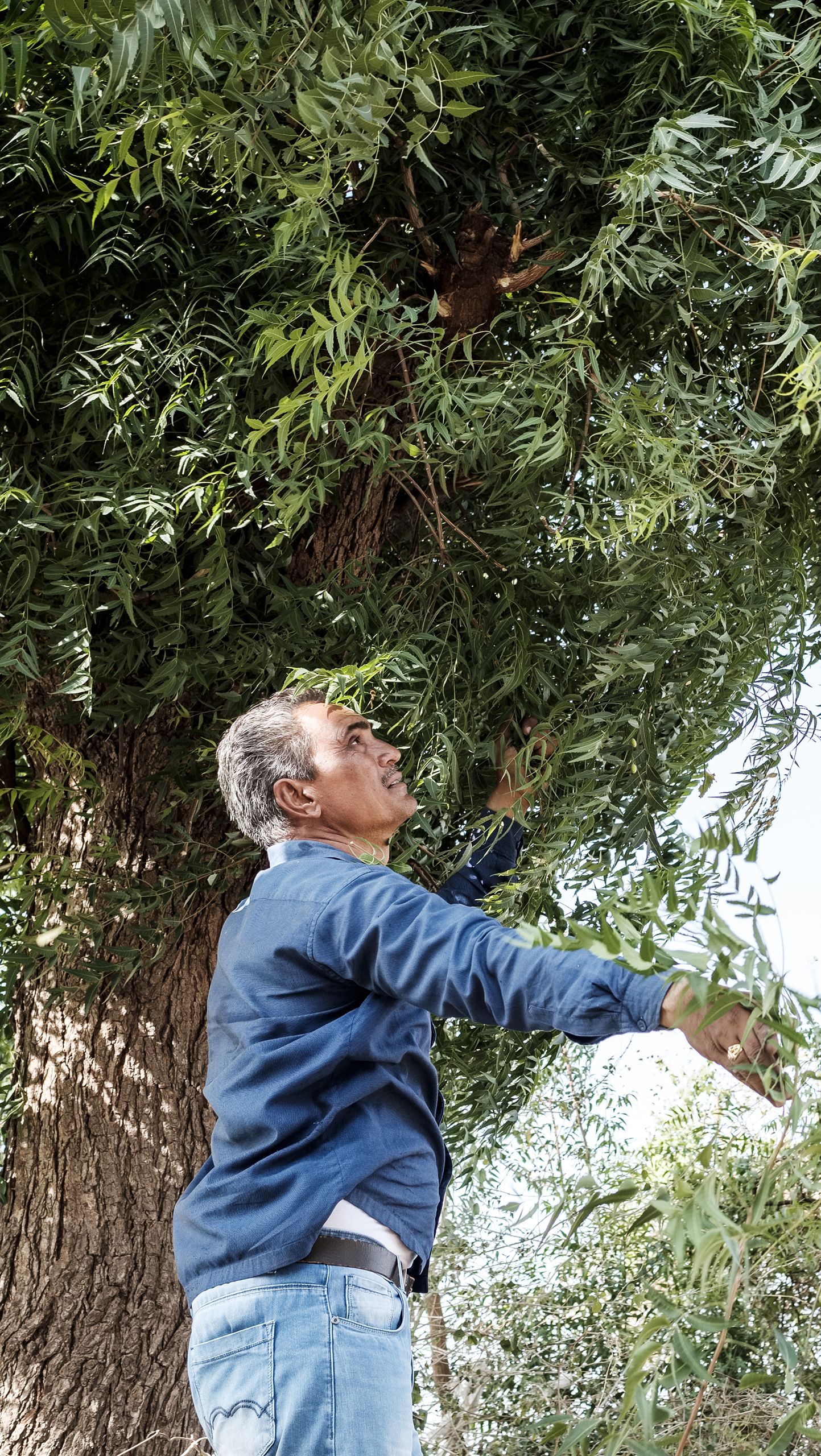
Vinodbhai collecting ingredients from nature to make a natural pesticide. 2018.
Vinodbhai collecting ingredients from nature to make a natural pesticide. 2018.
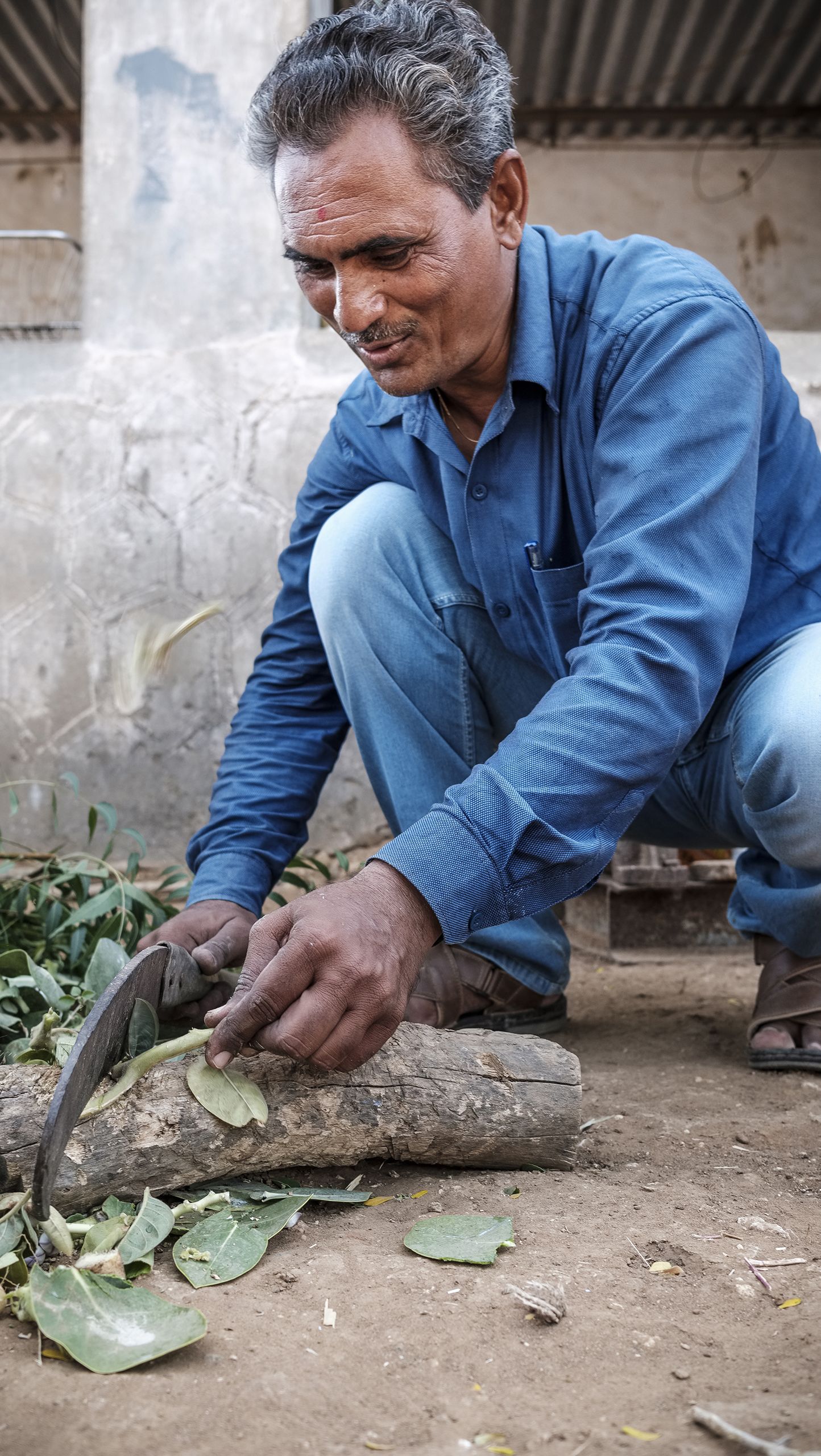
Vinodbhai collecting ingredients from nature to make a natural pesticide. 2018.
Vinodbhai collecting ingredients from nature to make a natural pesticide. 2018.
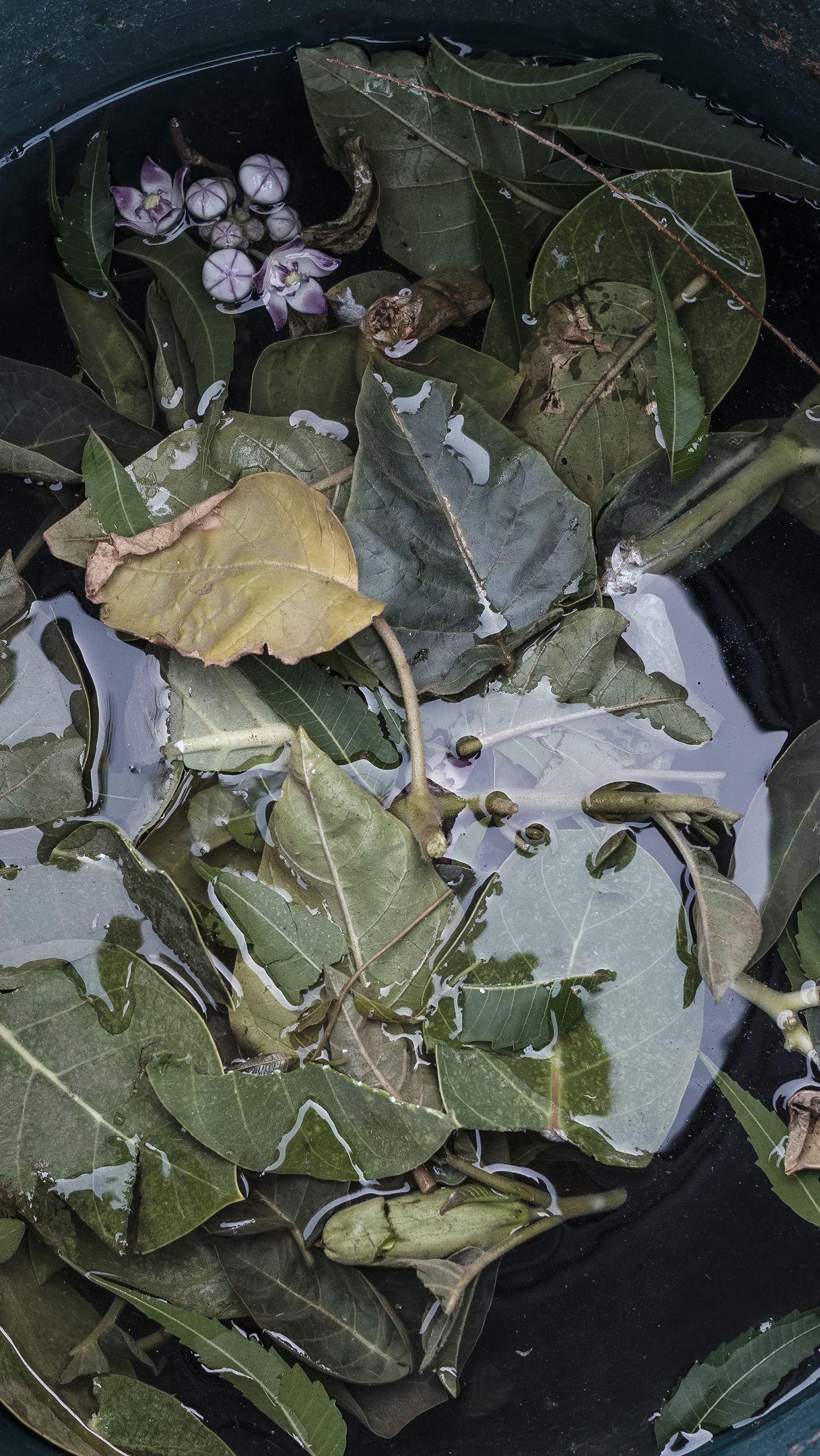
Vinodbhai collecting ingredients from nature to make a natural pesticide. 2018.
Vinodbhai collecting ingredients from nature to make a natural pesticide. 2018.
The Transformation Yields Results
By managing insect-pests using ingredients sourced from nature — at no cost to Vinodbhai — and planting his cotton plants more densely, by 2018, he had reduced his pesticide costs by 80% (compared to the 2015-16 season), while increasing his overall production by over 100% and his profit by 200%.
Additionally, by eliminating the use of synthetic pesticides and fertilisers, Vinodbhai has exceeded the requirements he is required to reach to become a licensed Better Cotton Farmer and fulfilled one of the key requirements of organic farming. He would like to achieve organic certification one day, but currently only has access to the genetically modified seeds that dominate India’s seed market, which would prevent him from qualifying.
“The most difficult part of my journey from conventional to sustainable farming is over. It was a tough road to take, but the results were worth it. I have even attracted more workers to help me keep my farm going.”
In particular, Vinodbhai’s workers understand that natural fertilisers and pesticides are less harmful for their health, compared to conventional agro-chemicals, which can pose distinct health risks to farmers and workers.
“For most farmers, seeing is believing. They’re not easily persuadable – they like to see proof that alternative practices work. But the more they see and know, the more likely they’ll be to change their ways.”
Better Cotton Farmer Vinodbhai Patel, 2018
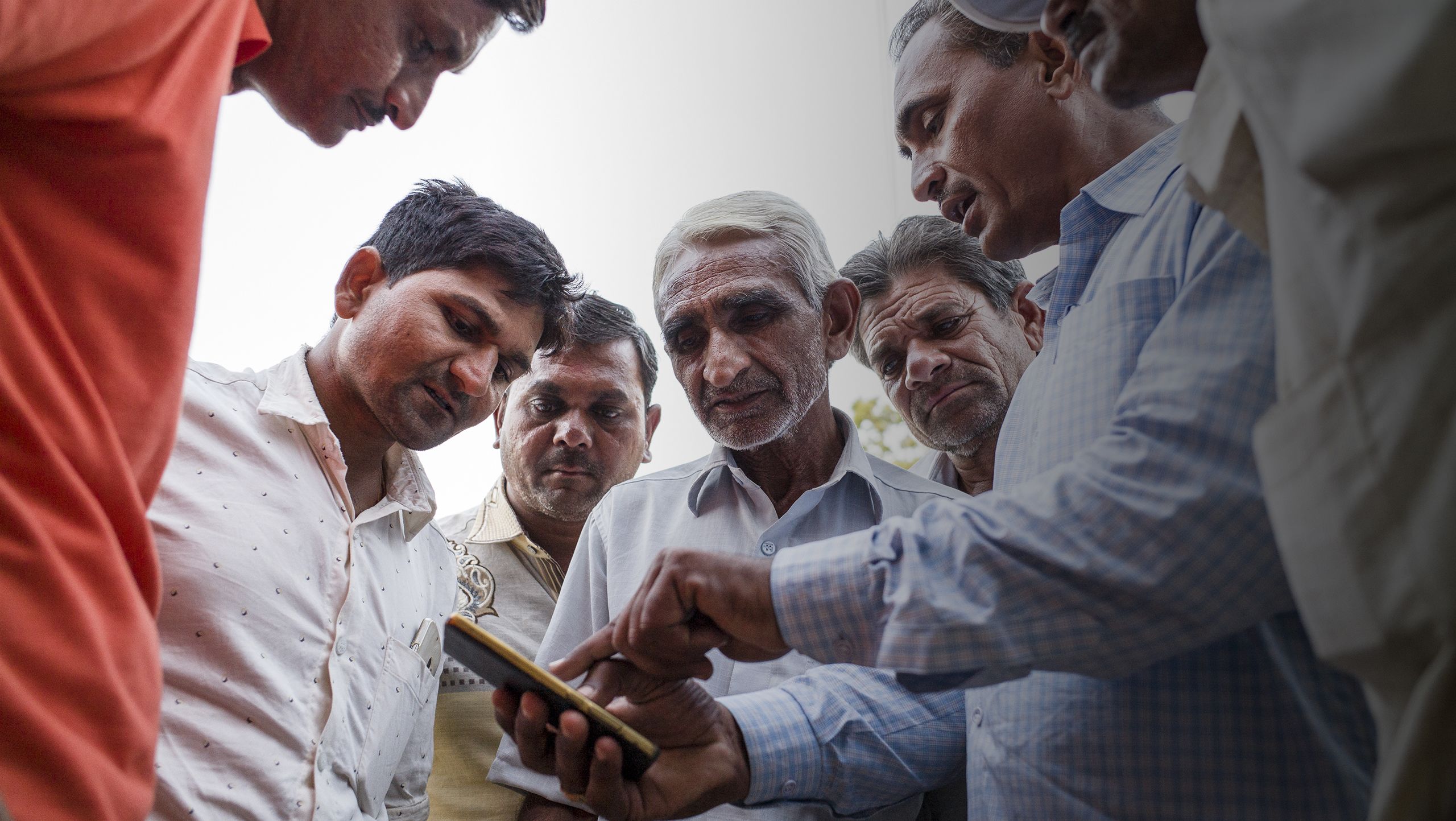
Sharing Knowledge and Continuing the Journey
Vinodbhai, emboldened by his success in adopting natural farming methods, has invited more than 3,000 farmers to visit his farm since 2016 to hear about his experiences. He has also shared photos and videos with more than 1,500 farmers via digital messaging service WhatsApp. However, uptake is slow, with only around 10% of the Better Cotton Farmers in his region adopting natural methods so far, but he is beginning to make headway.
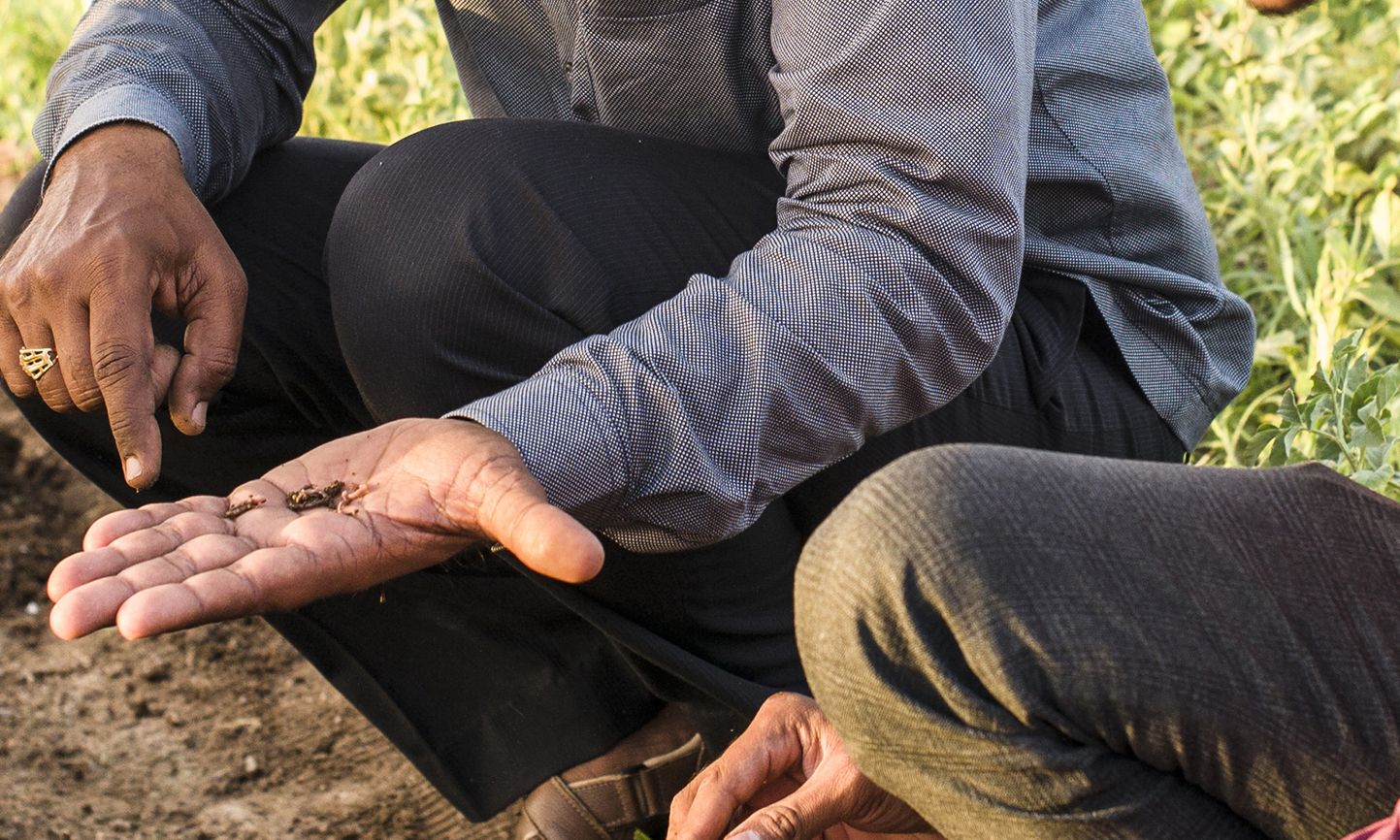
Vinodbhai explaining how the soil is benefiting from the presence of earthworms. 2018.
For now, the transition to sustainable practices remains an uphill struggle, with government policy favouring conventional pesticides and fertilisers, and local retailers stocking synthetic agro-chemical products continuing to target smallholders. However, Better Cotton and our Implementing Partner AFPRO are optimistic, and will continue to scale up our efforts to reach more farmers. And gradually, interest in natural farming methods in Gujarat is rising, with more farmers adopting Zero Budget Natural Farming techniques (a farming practice that believes in natural growth of crops without adding any fertilisers and pesticides or any other foreign elements, with zero net cost of production), familiarised in India by agriculturist Subhash Palekar, popularly known as Krishi ka Rishi, the ‘sage of agriculture’.
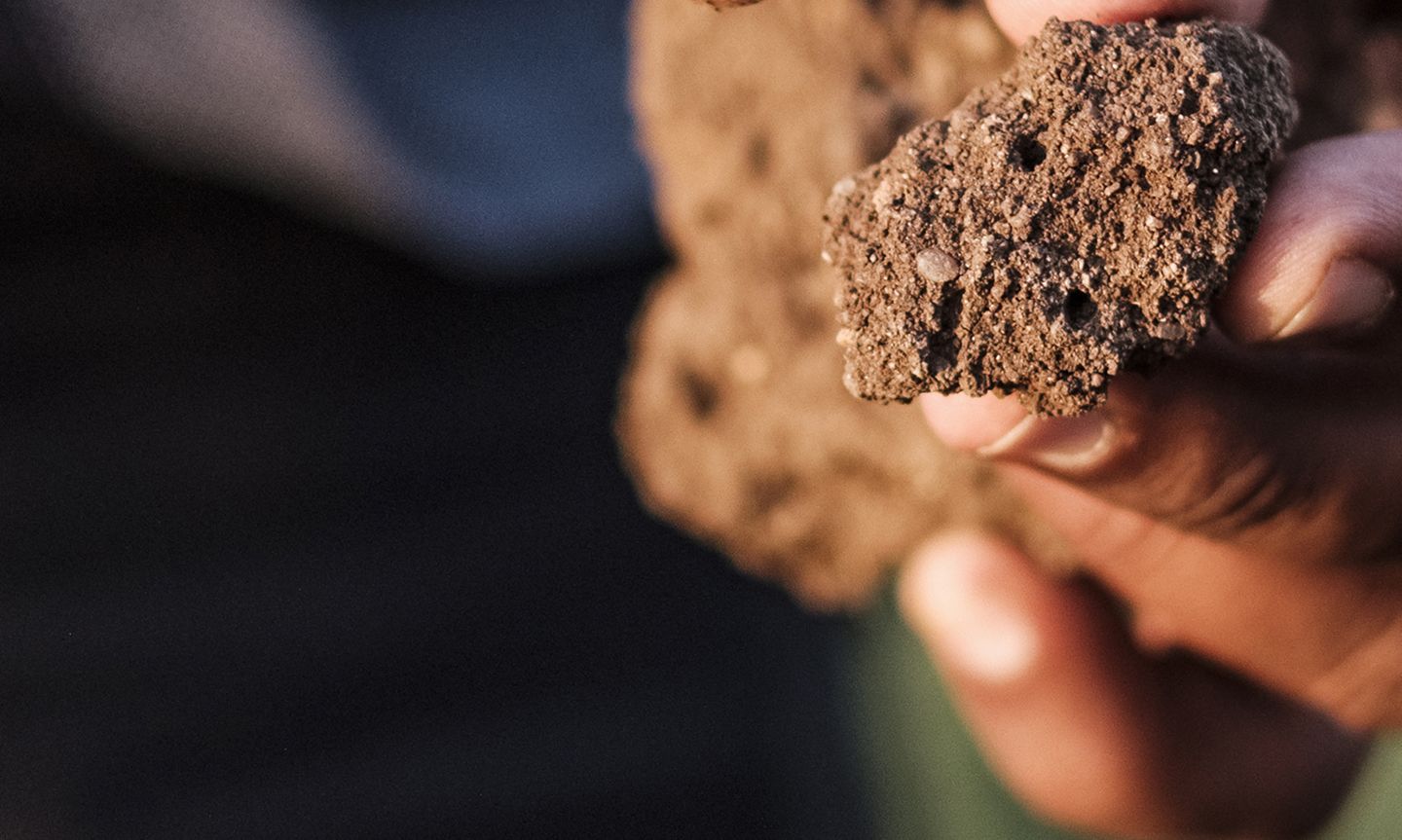
Vinodbhai explaining how the soil is benefiting from the presence of earthworms. 2018.
As for Vinodbhai, he plans to plant more trees and crops to nourish the soil on his cotton farm, upgrade his machinery and equipment where possible, and trial a more straightforward, bacteria-based natural fertiliser.
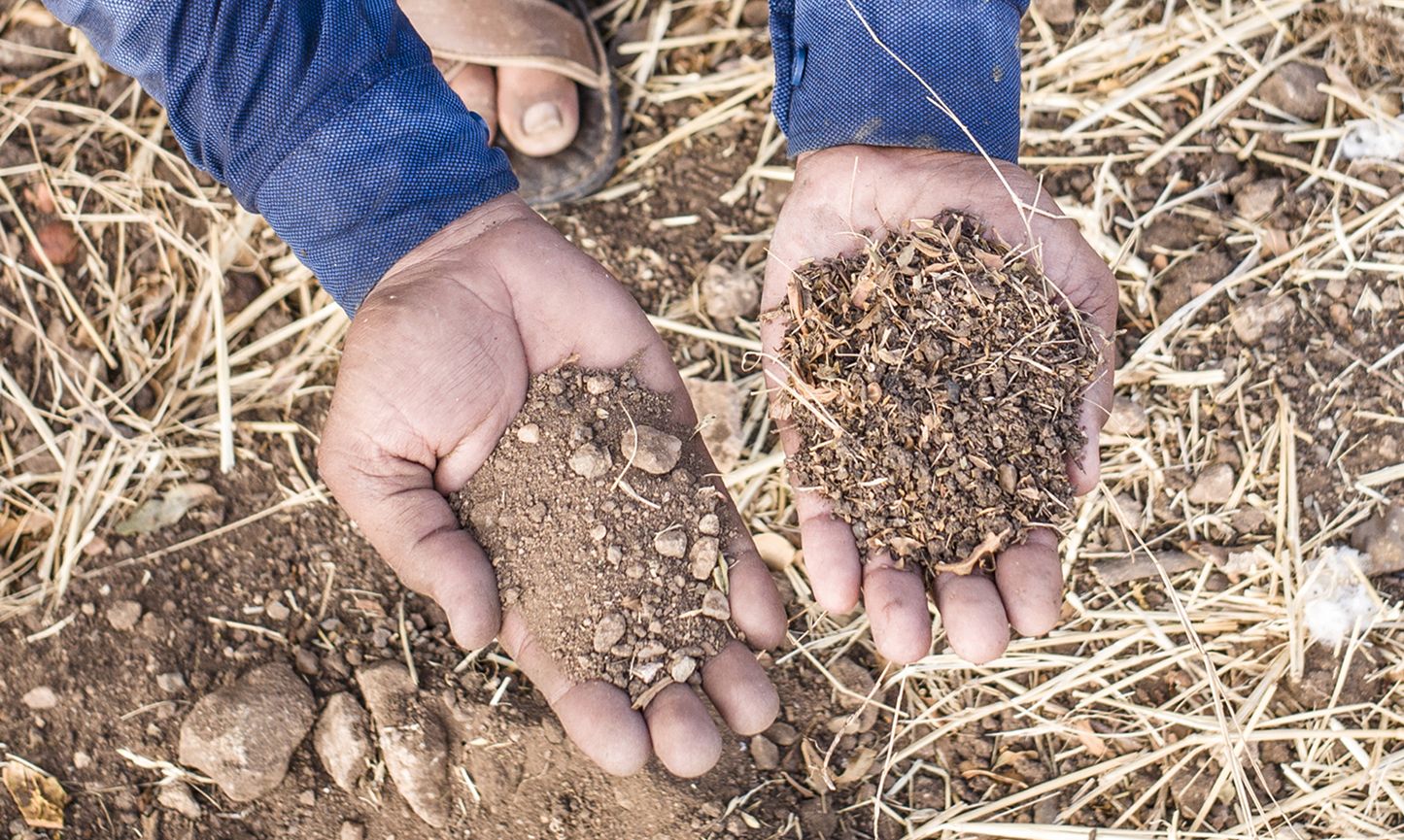
Vinodbhai comparing soil from his field with the soil from a neighboring field. 2018.
This alternative requires just unrefined cane sugar, a little water, and a culture of bacteria known as a ‘waste decomposer’ (which aids in speeding up the decay process), which he obtains, with minimal costs, from India’s National Centre for Organic Farming. Initial tests on his cumin plot have proved encouraging.
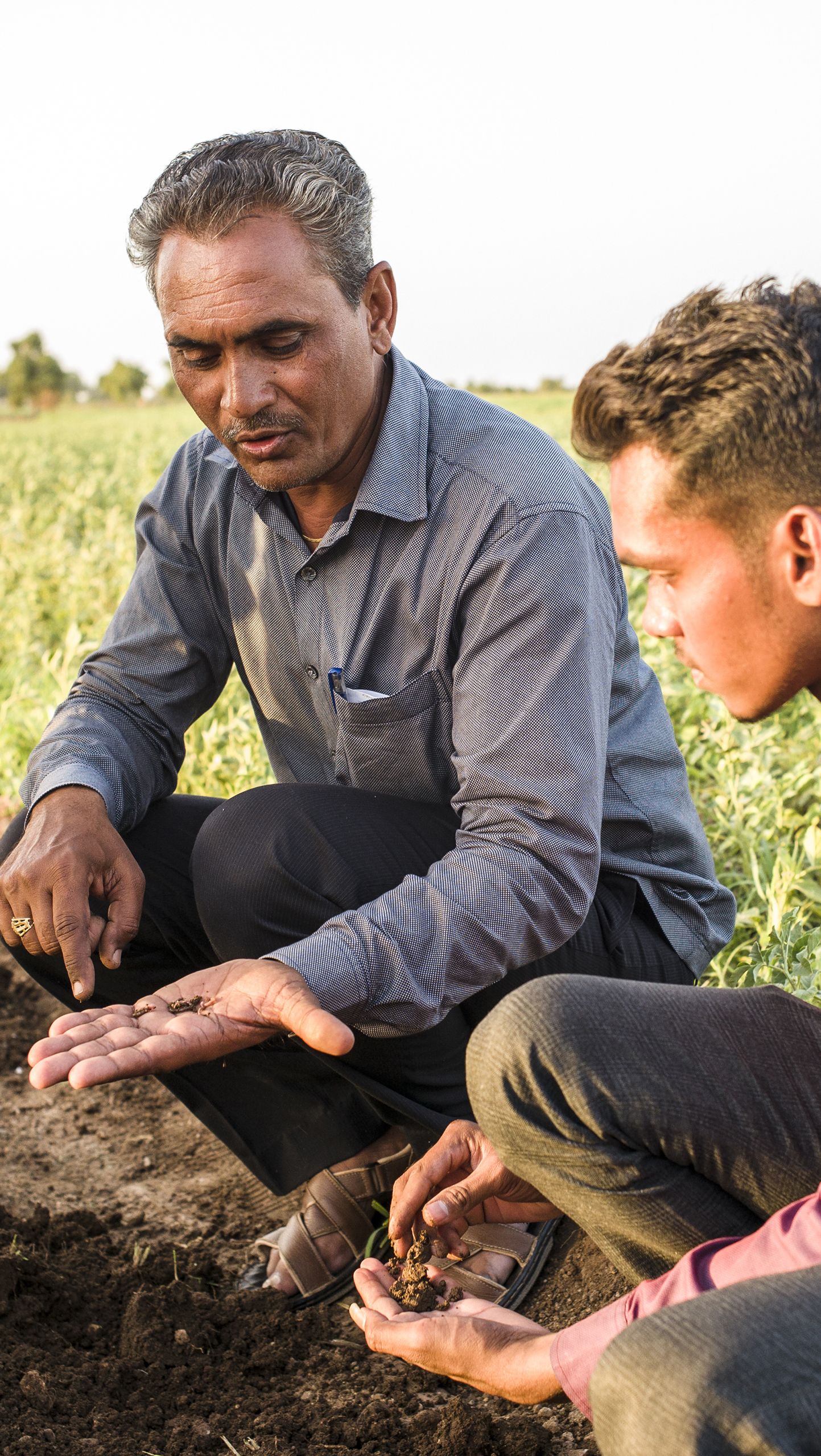
Vinodbhai explaining how the soil is benefiting from the presence of earthworms. 2018.
Vinodbhai explaining how the soil is benefiting from the presence of earthworms. 2018.
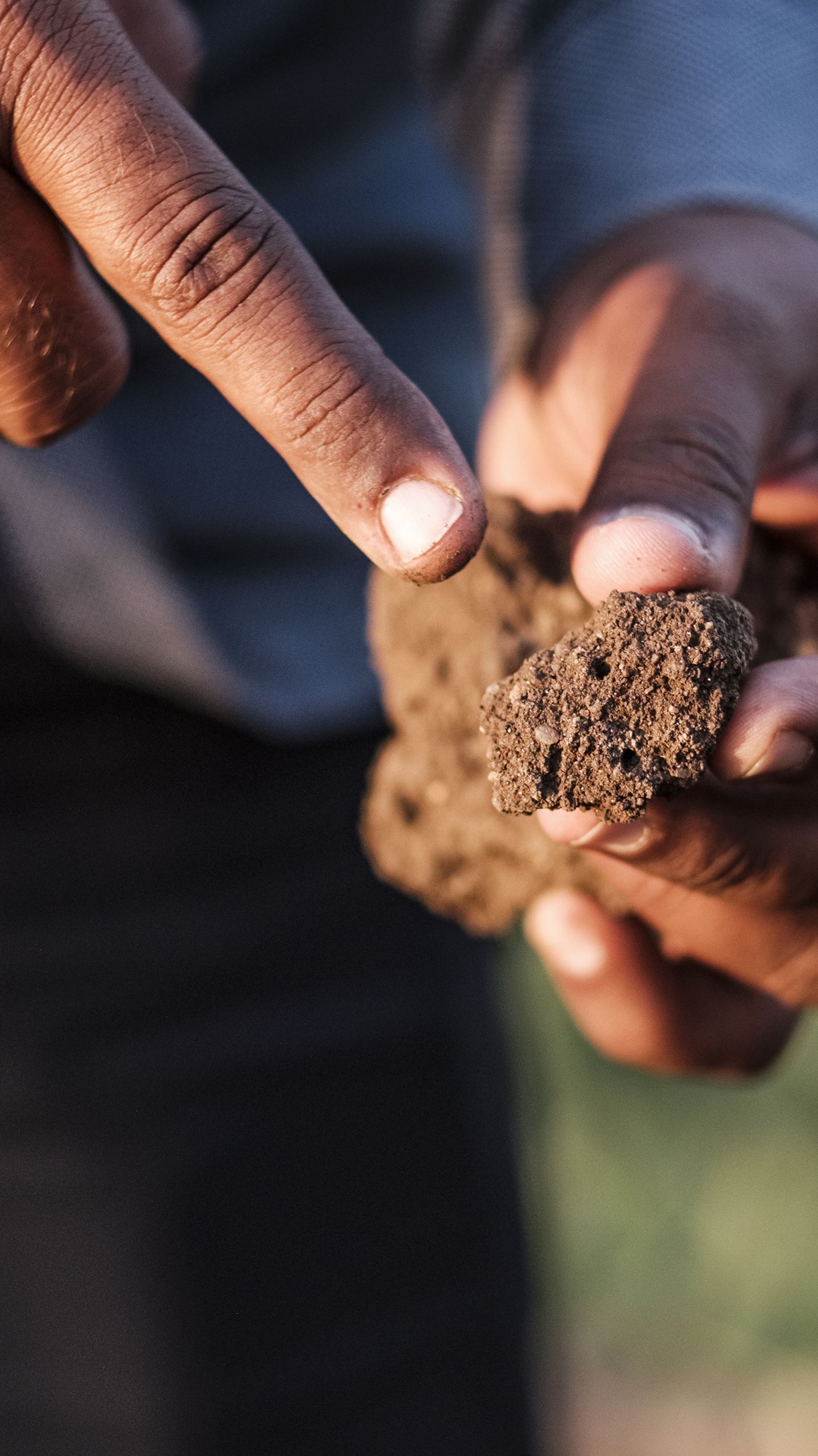
Vinodbhai explaining how the soil is benefiting from the presence of earthworms. 2018.
Vinodbhai explaining how the soil is benefiting from the presence of earthworms. 2018.
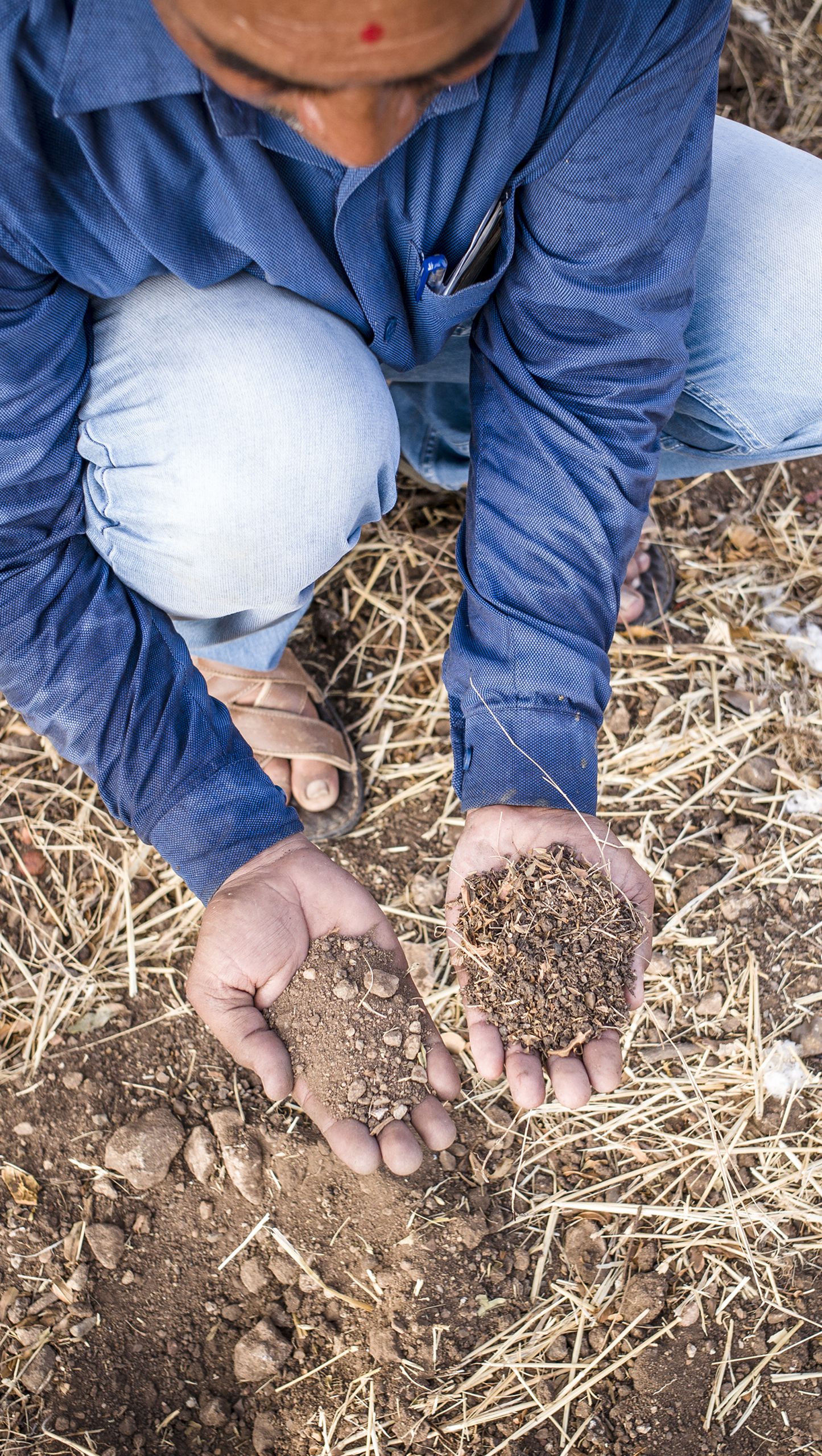
Vinodbhai comparing soil from his field with the soil from a neighboring field. 2018.
Vinodbhai comparing soil from his field with the soil from a neighboring field. 2018.
A Word from Better Cotton
This is a powerful story about a Better Cotton Farmer who has successfully increased his yield while eliminating his dependence on costly synthetic pesticides and fertilisers, resulting in healthier soil, a decrease in insect-pests and increased profits.
But it doesn’t stop there.
Vinodbhai is sharing his knowledge about natural farming techniques and inspiring other farmers in his community. We are incredibly proud of Vinodbhai’s achievements and his drive to share knowledge. We would like to support his efforts further by amplifying his experiences and perspectives to a global audience, with people like you. Vinodbhai is also proud of his achievements and eager to share his story; this year, at Better Cotton’s 2018 Global Cotton Conference in Brussels, Vinodbhai shared his successes with natural farming techniques with more than 300 people.